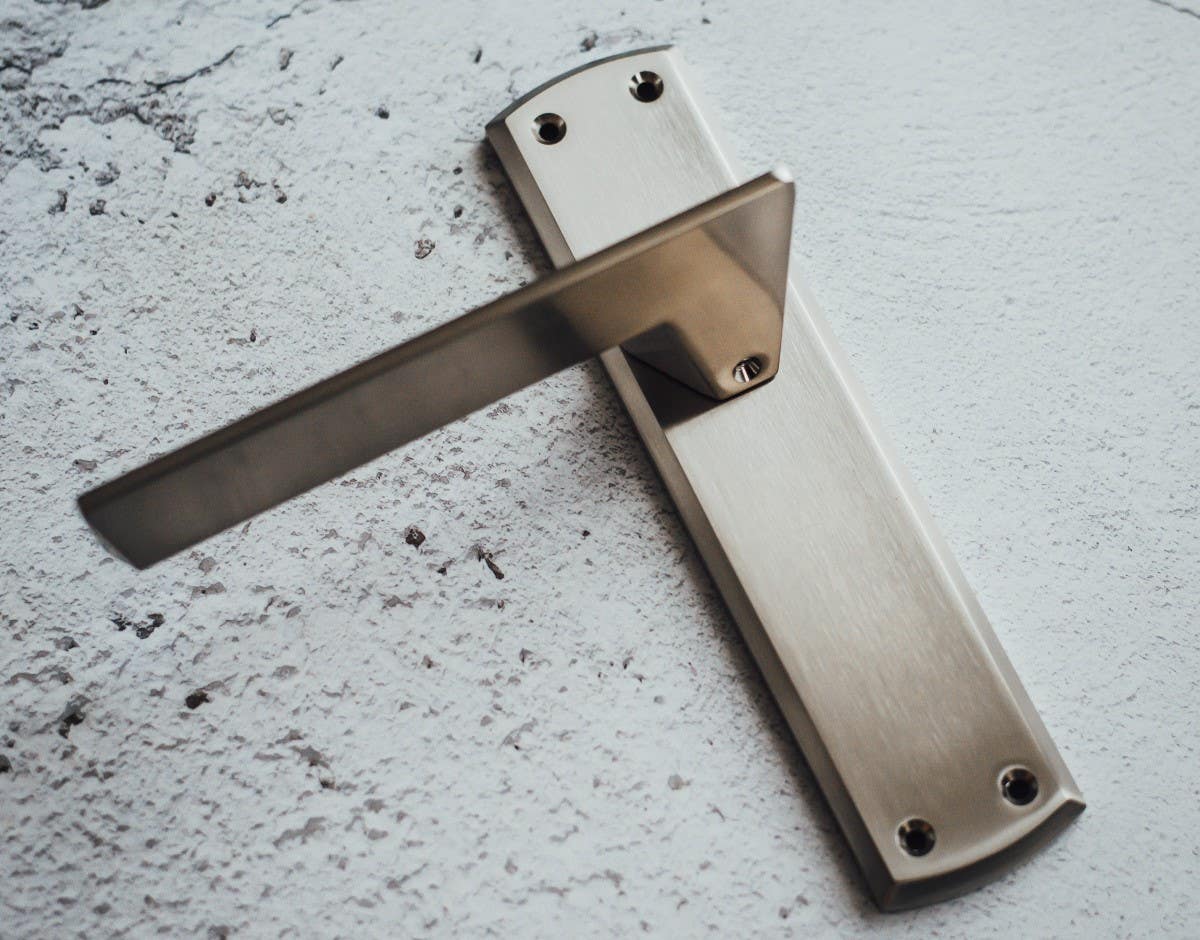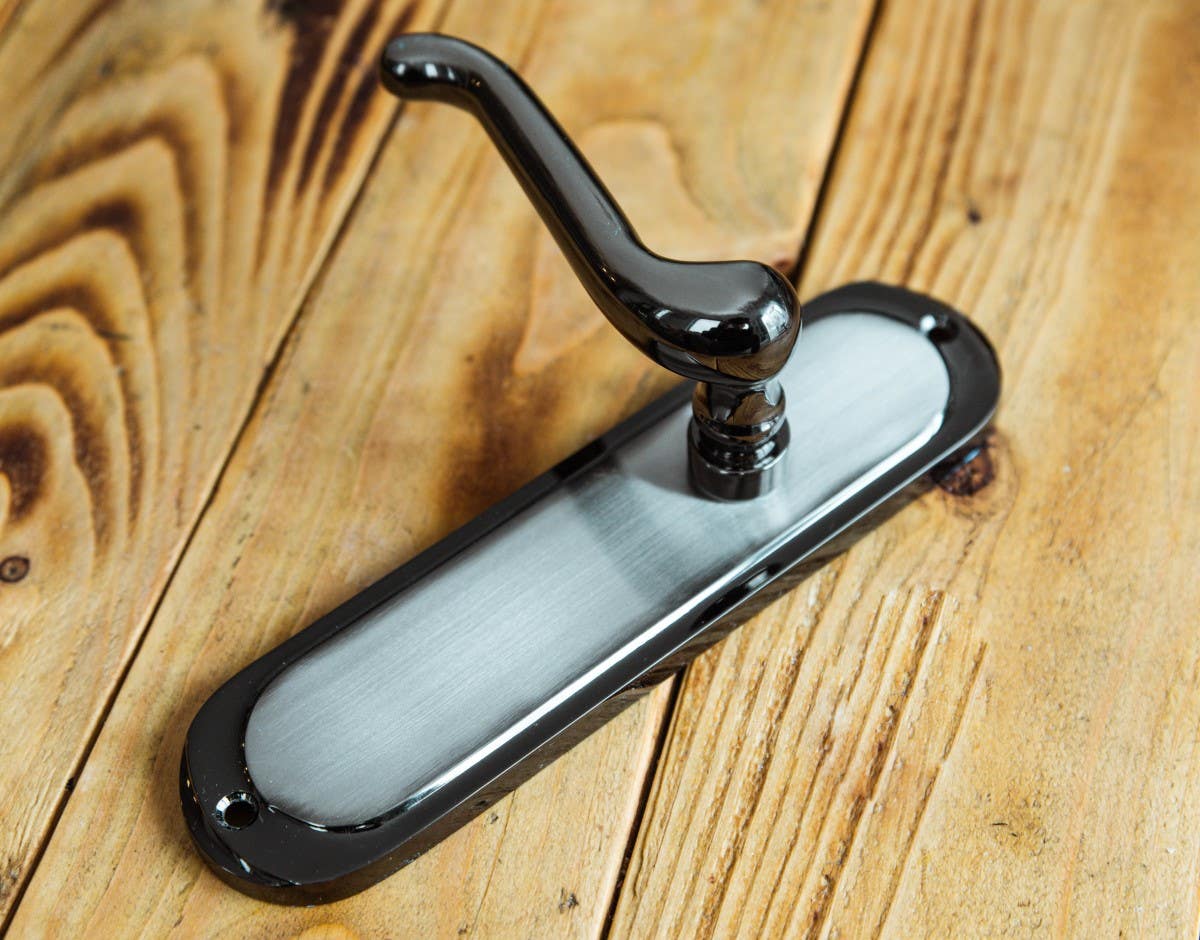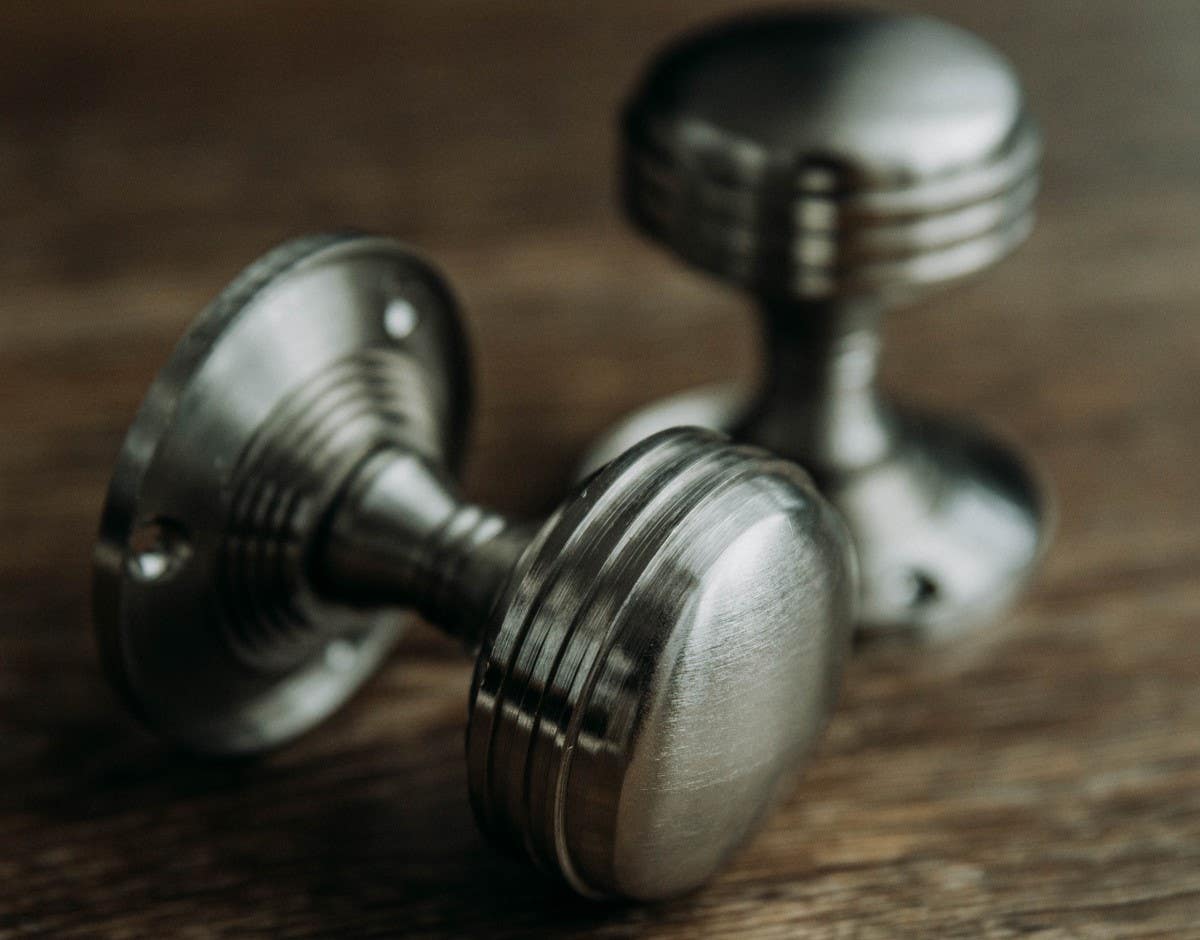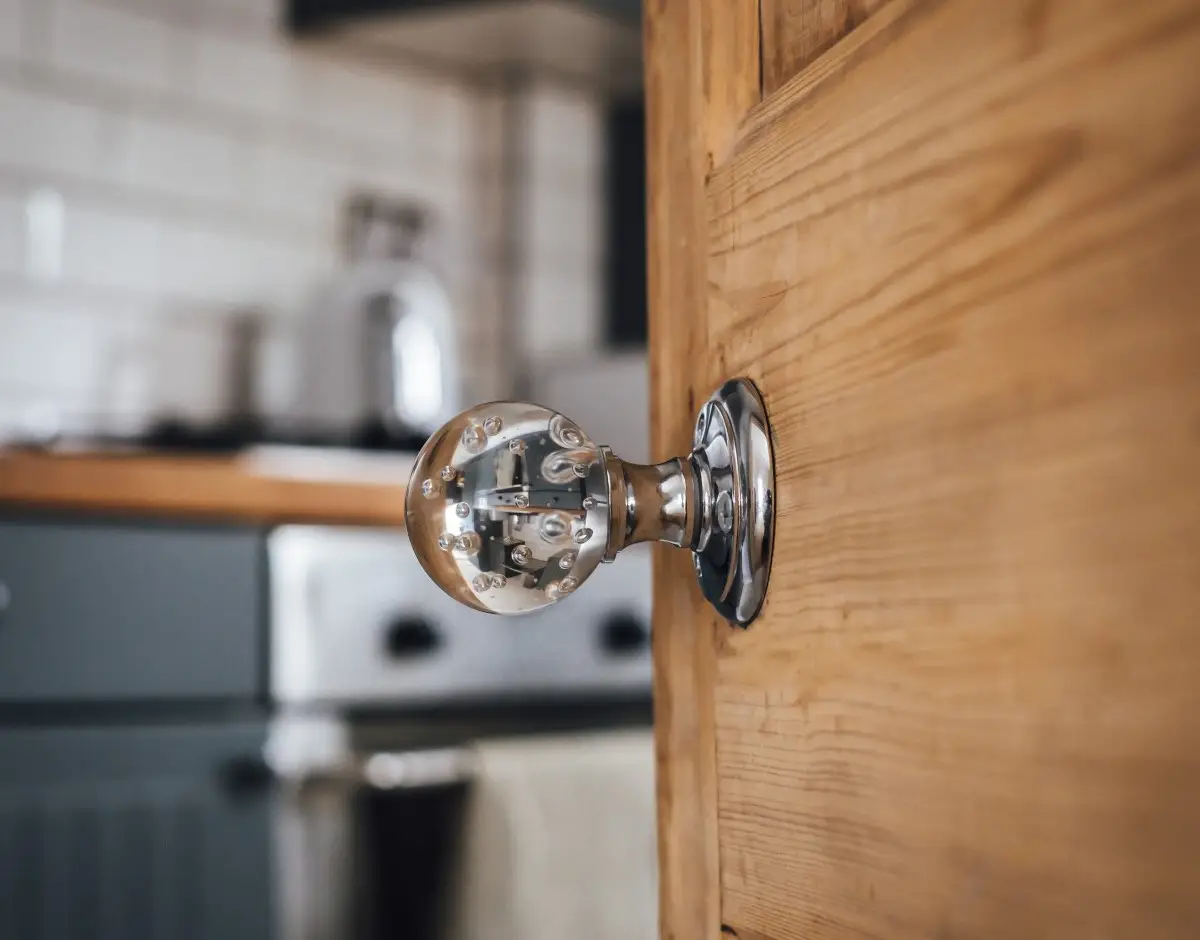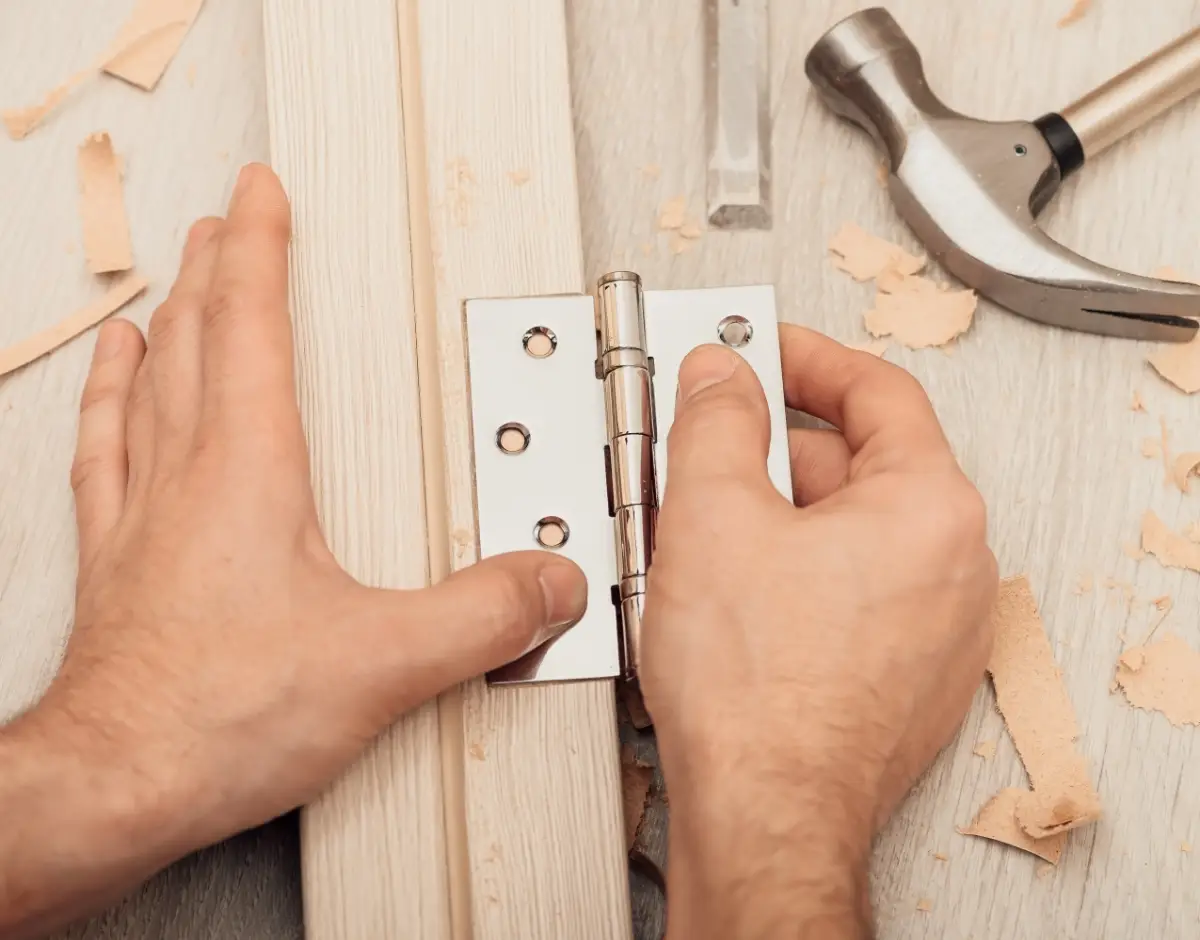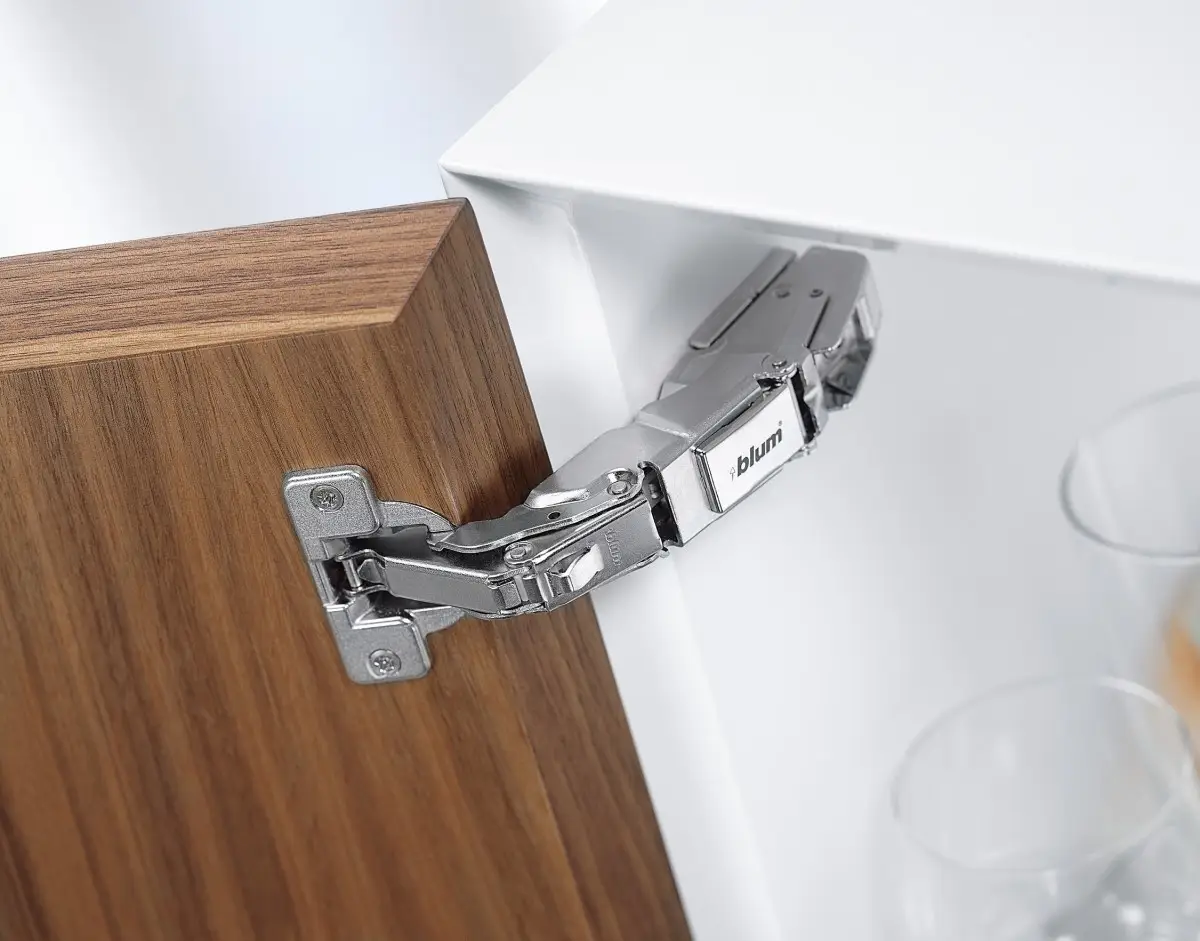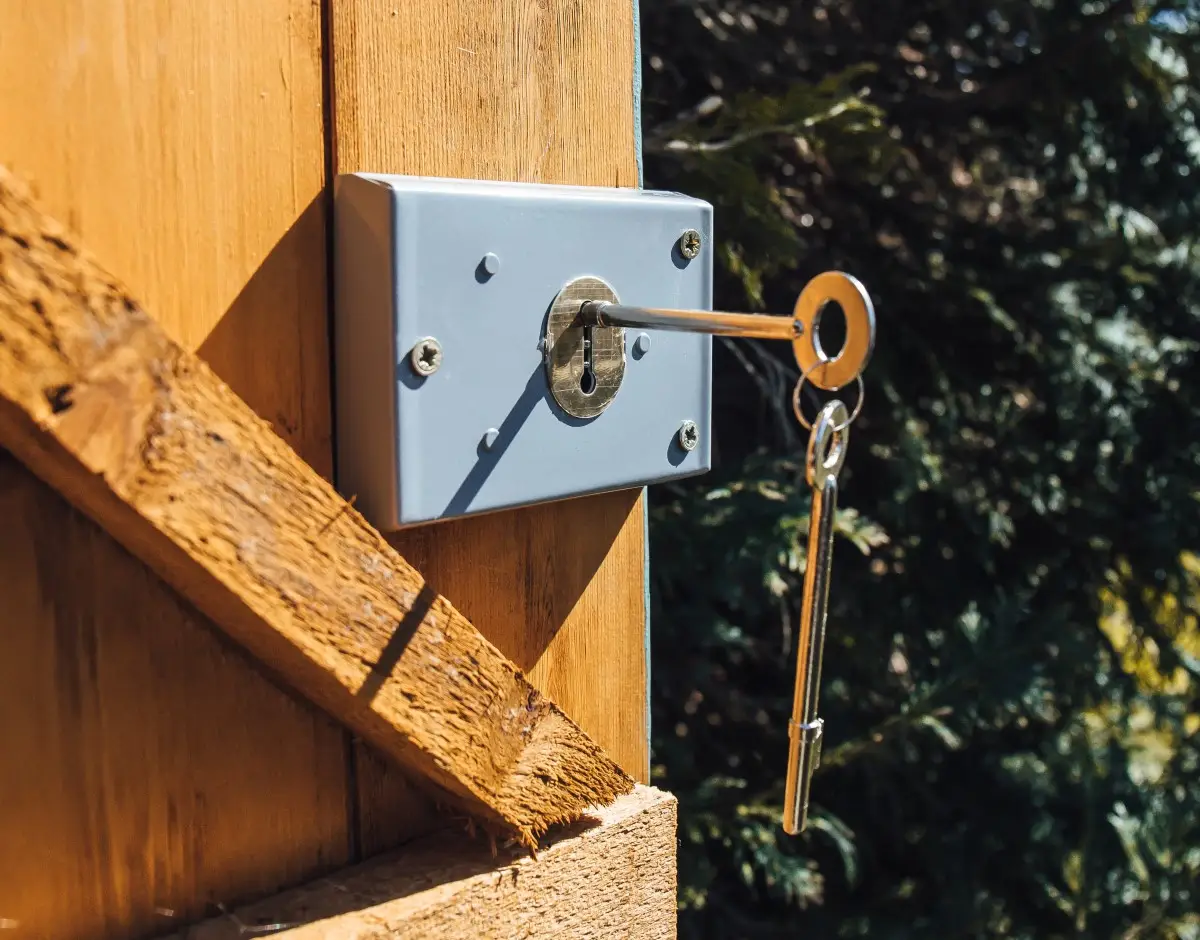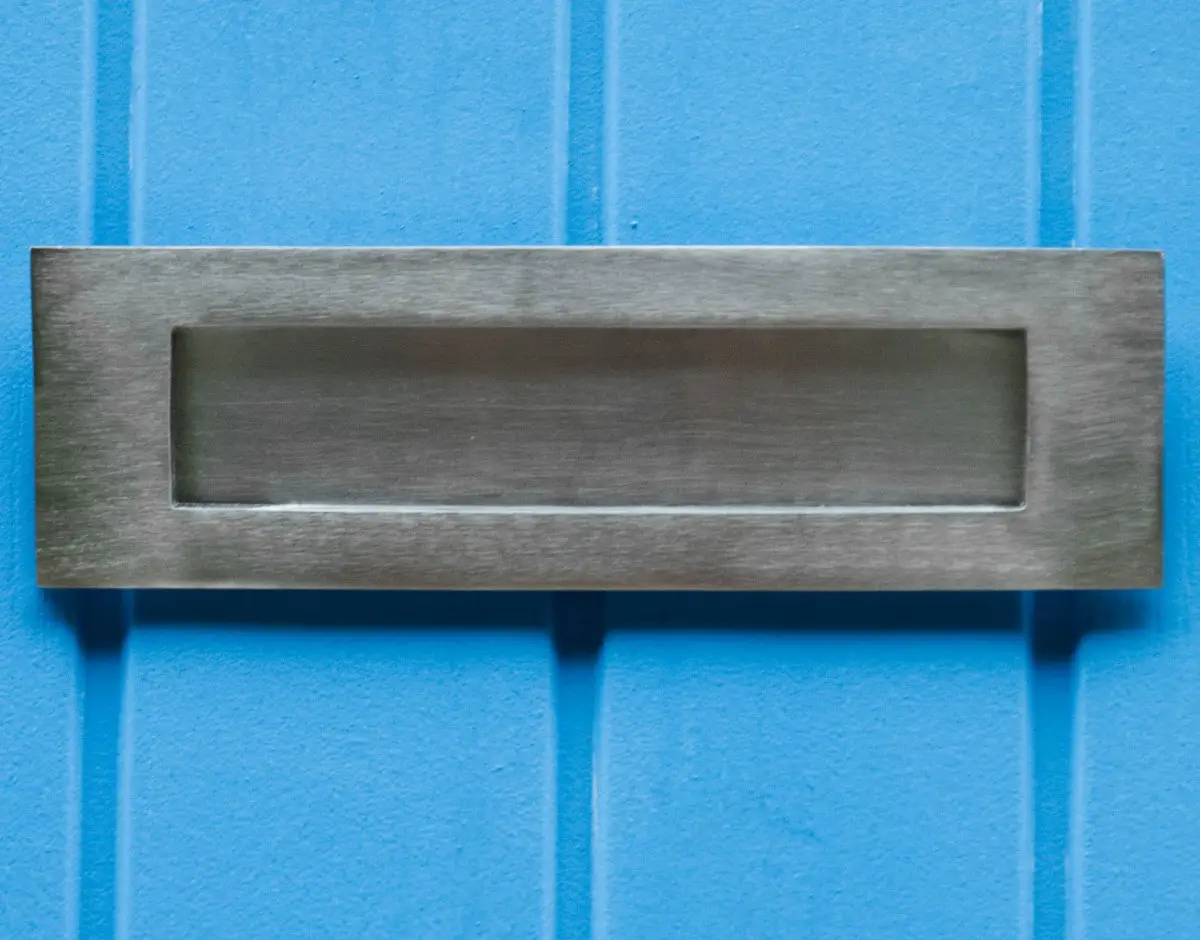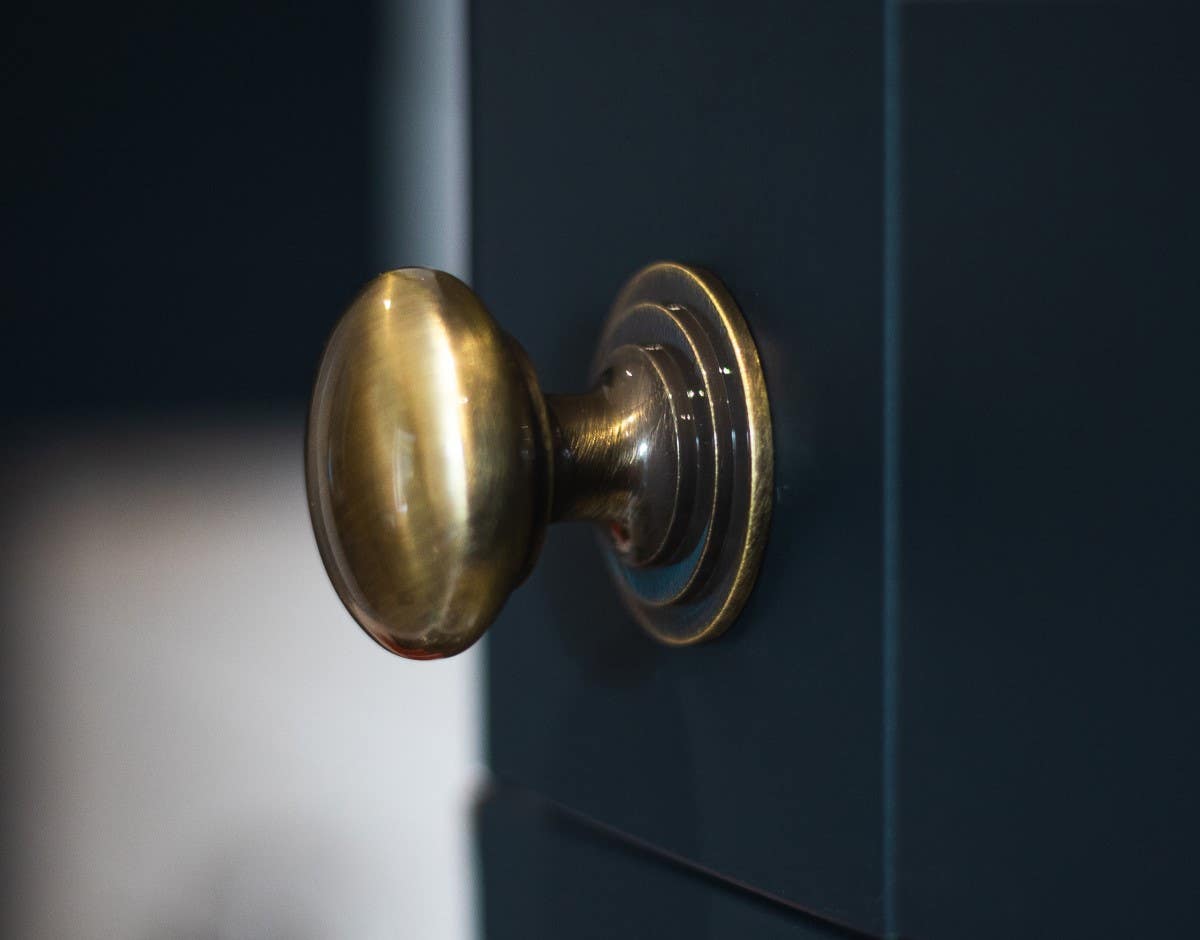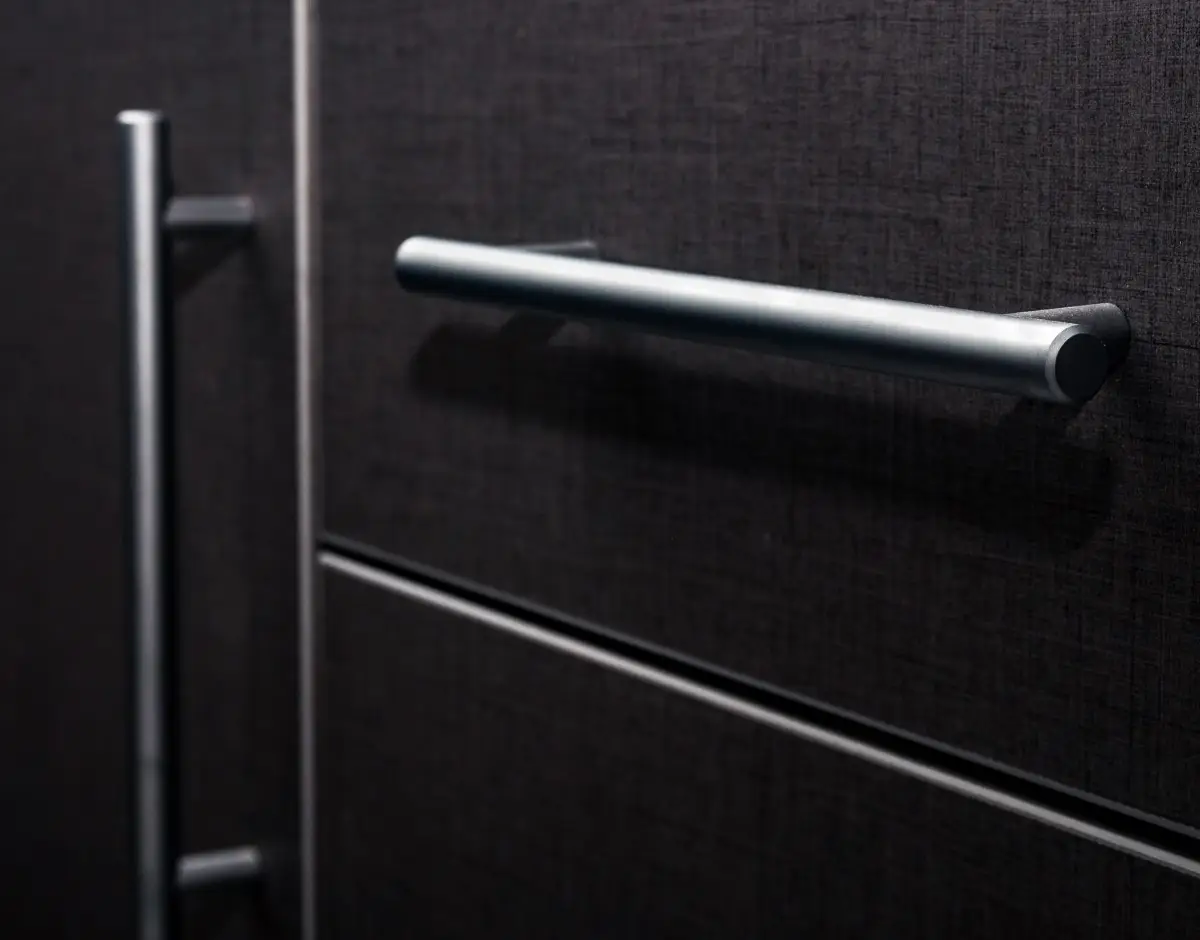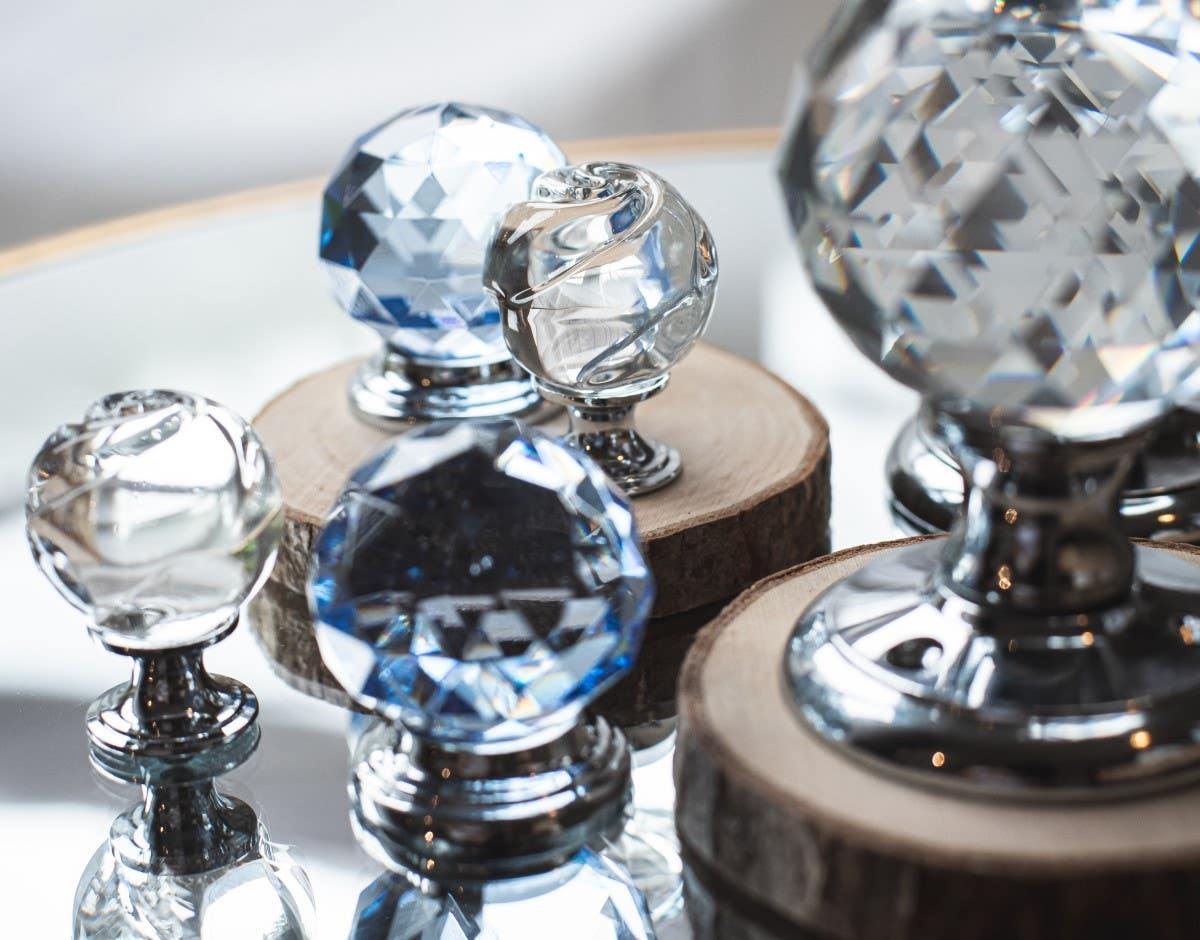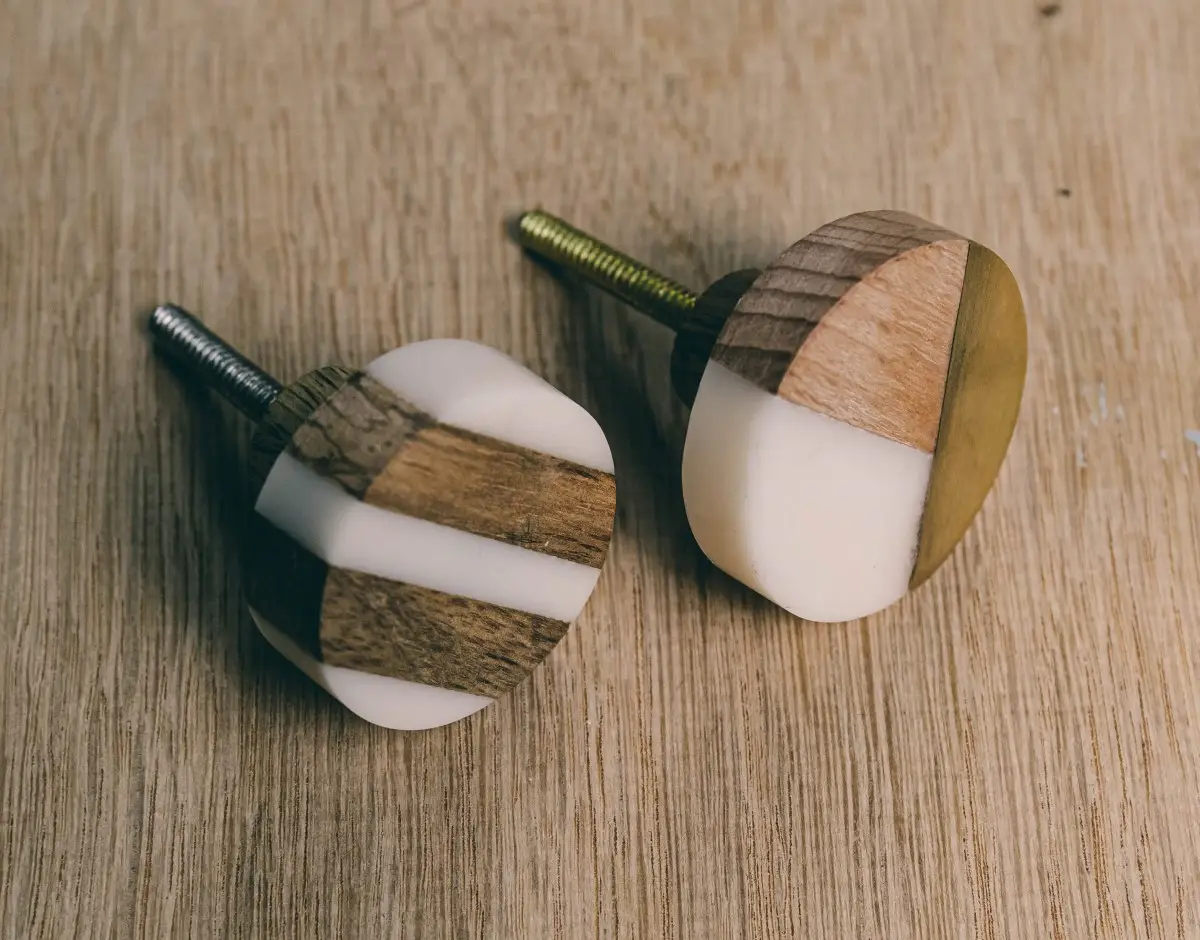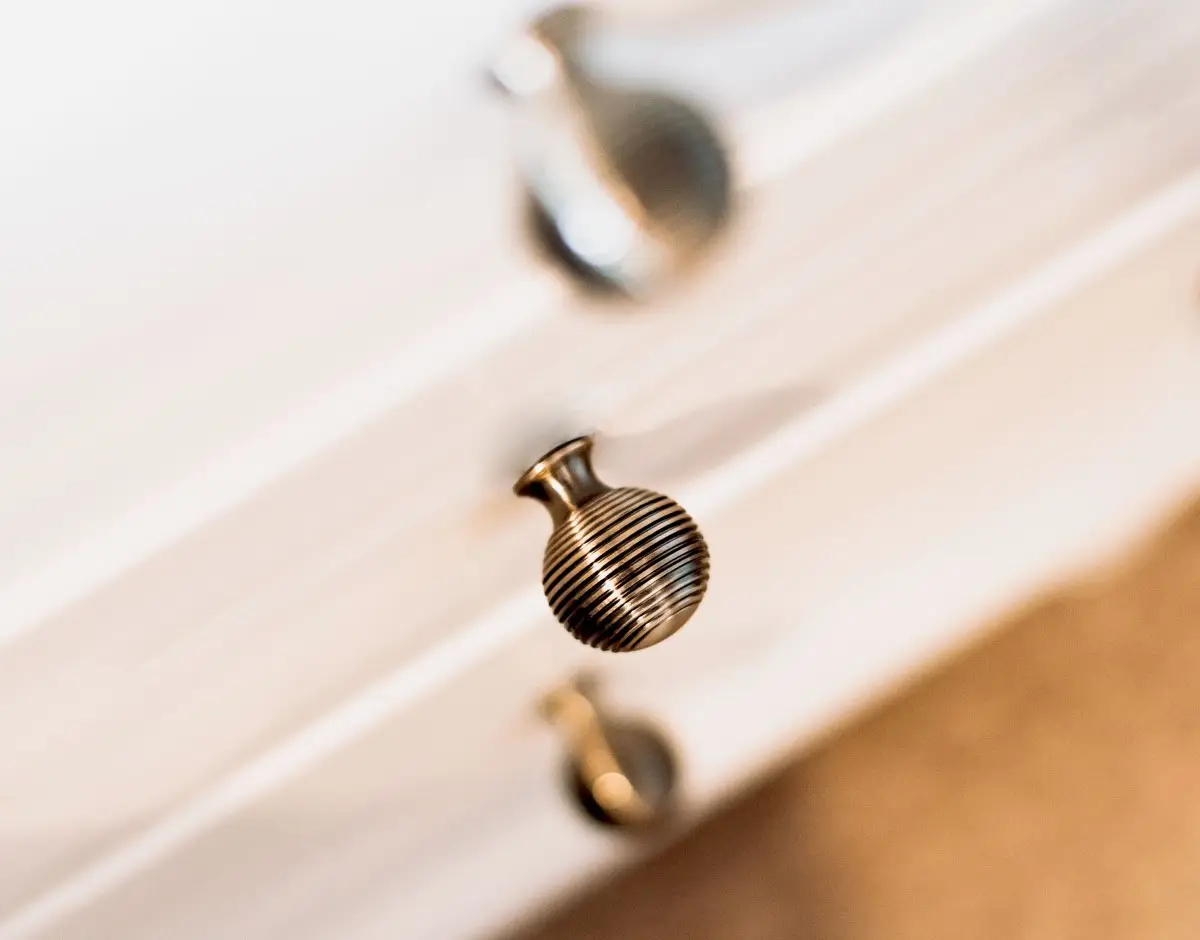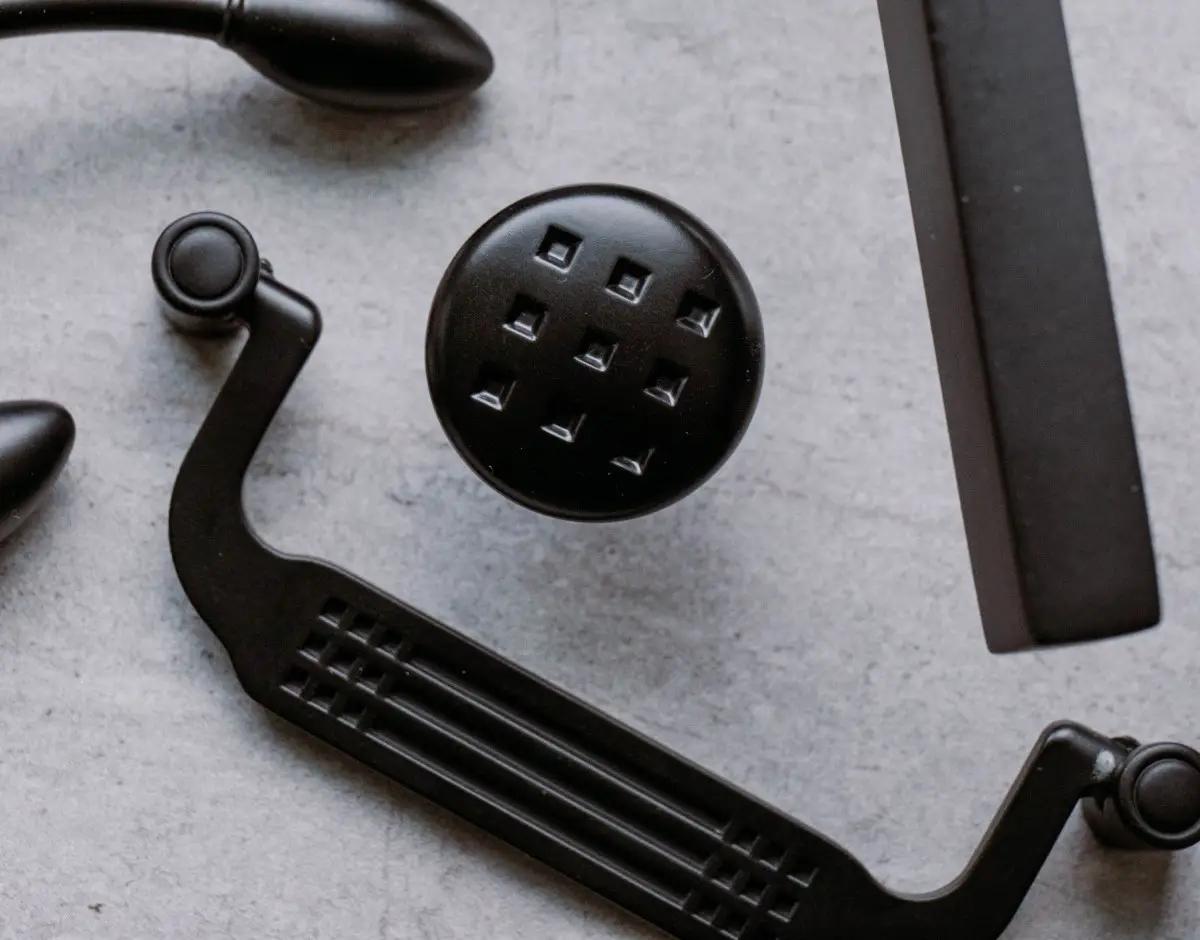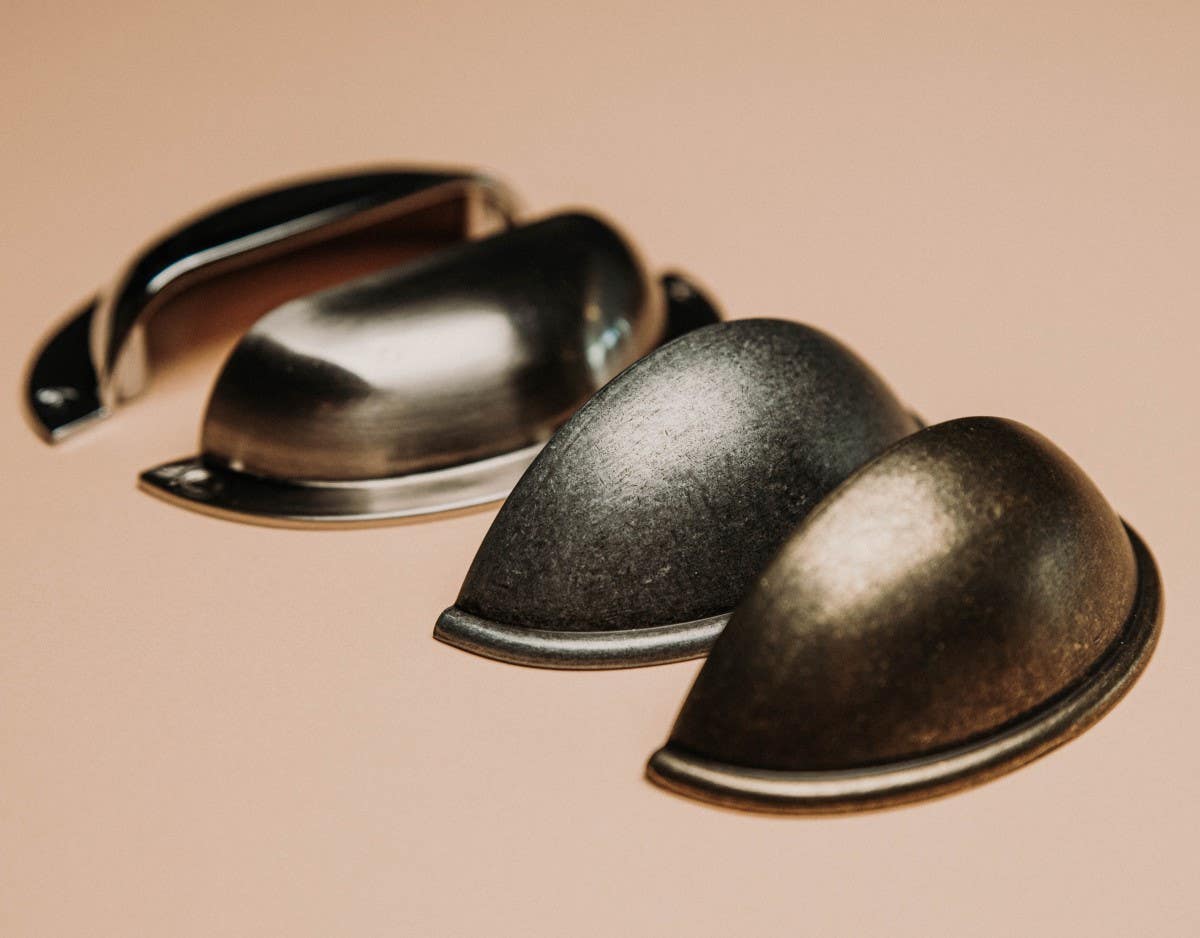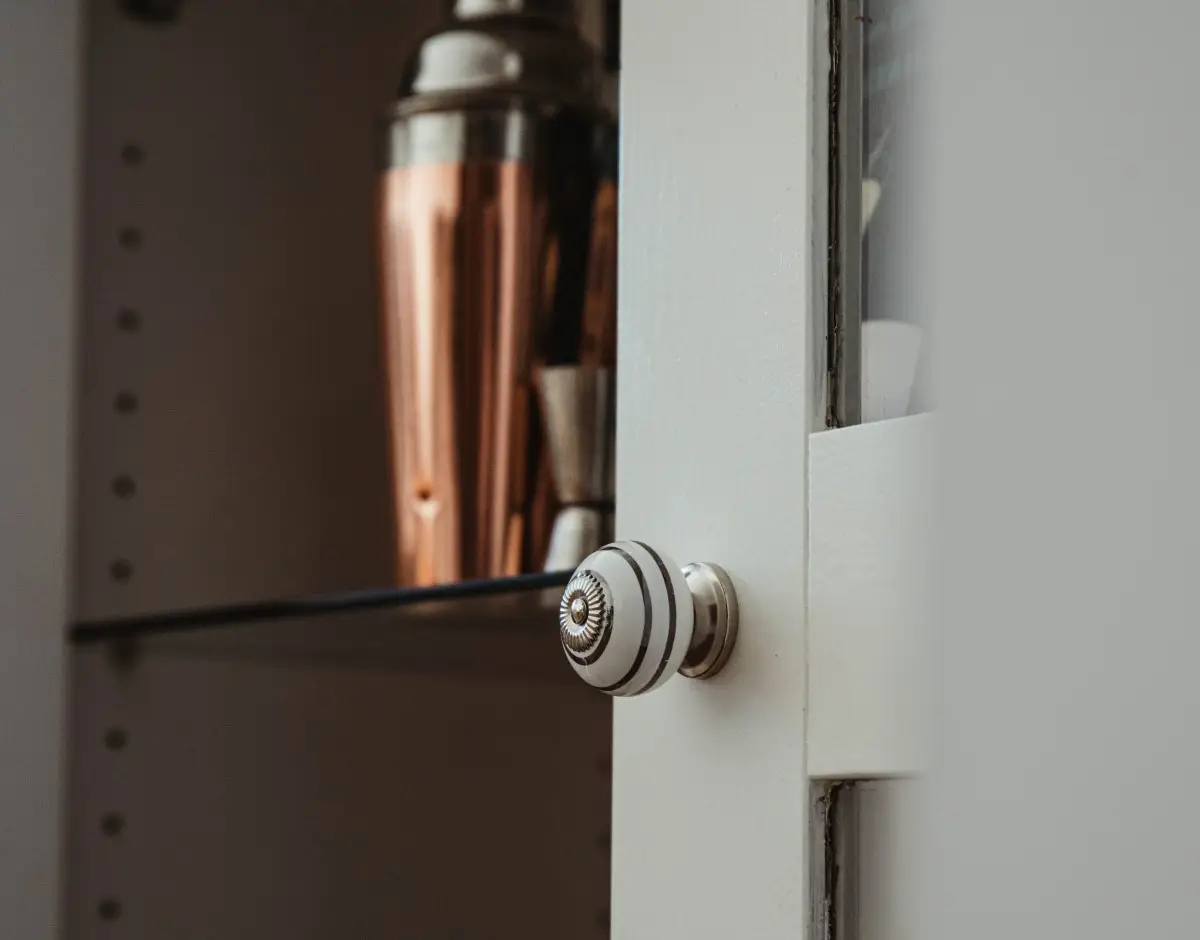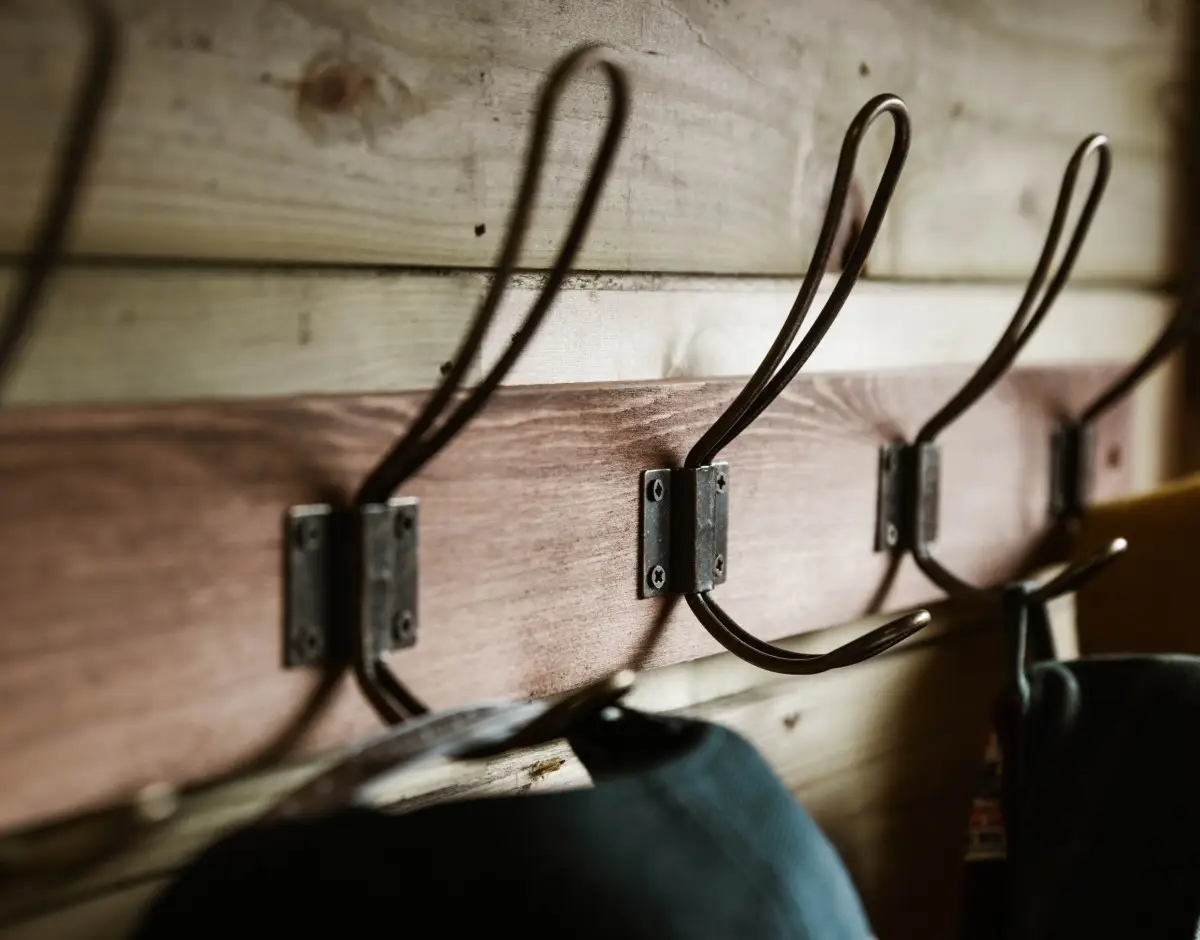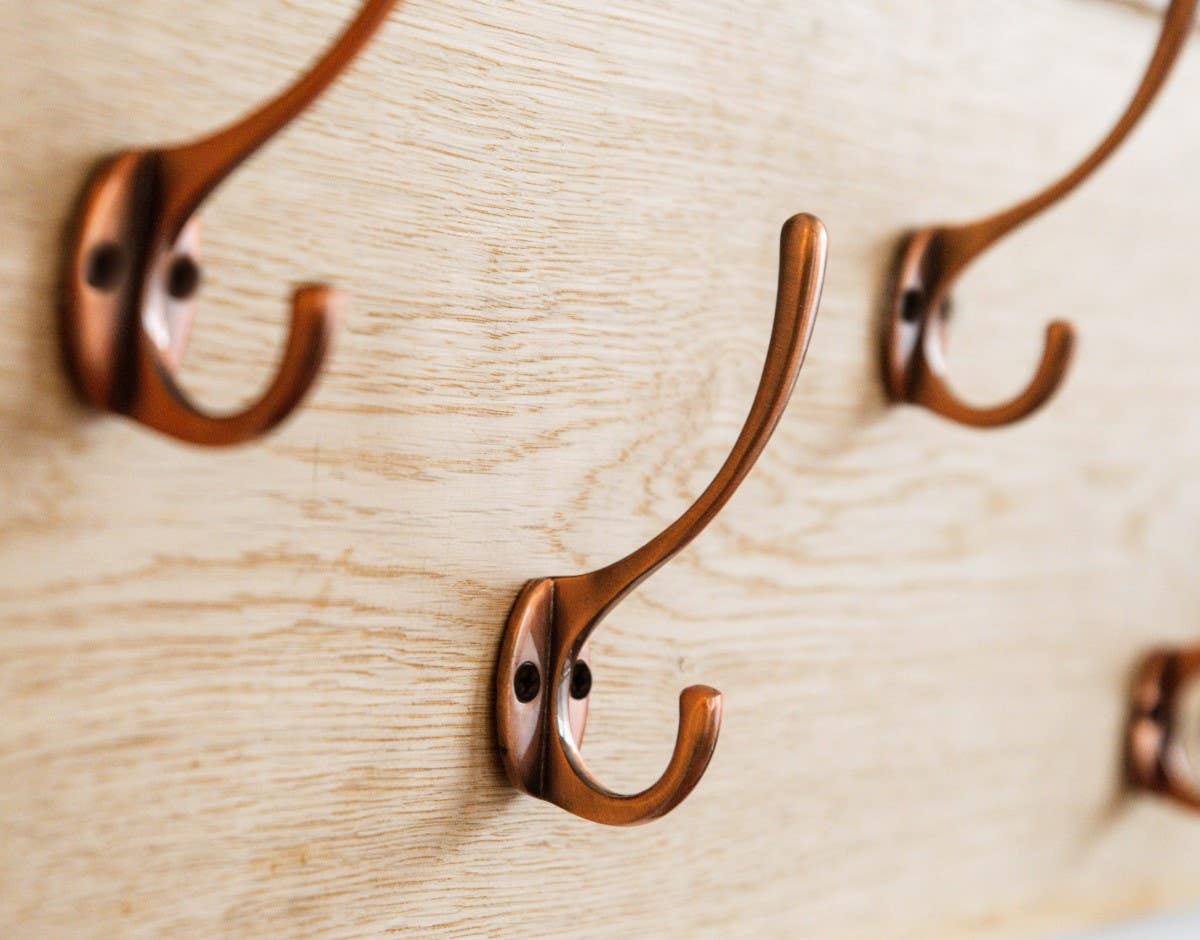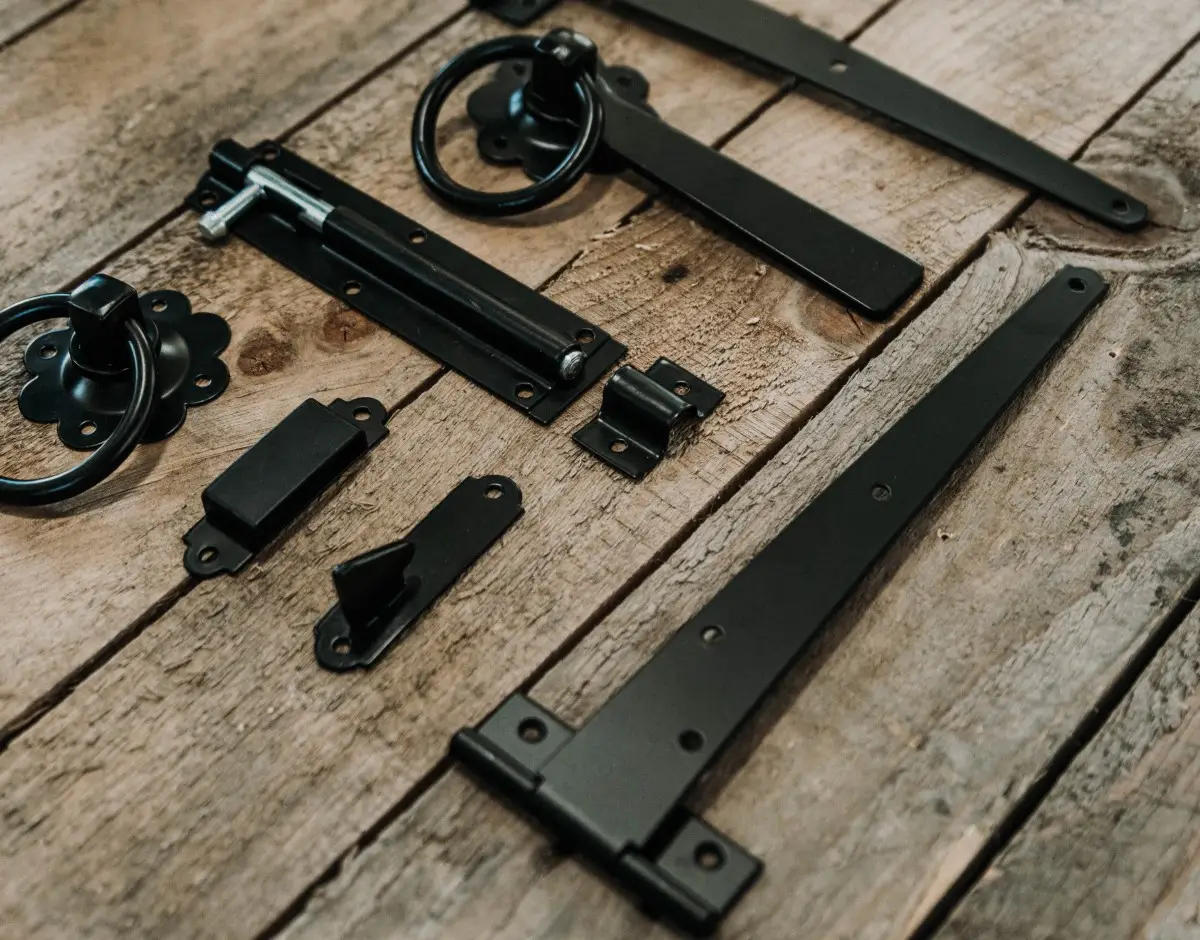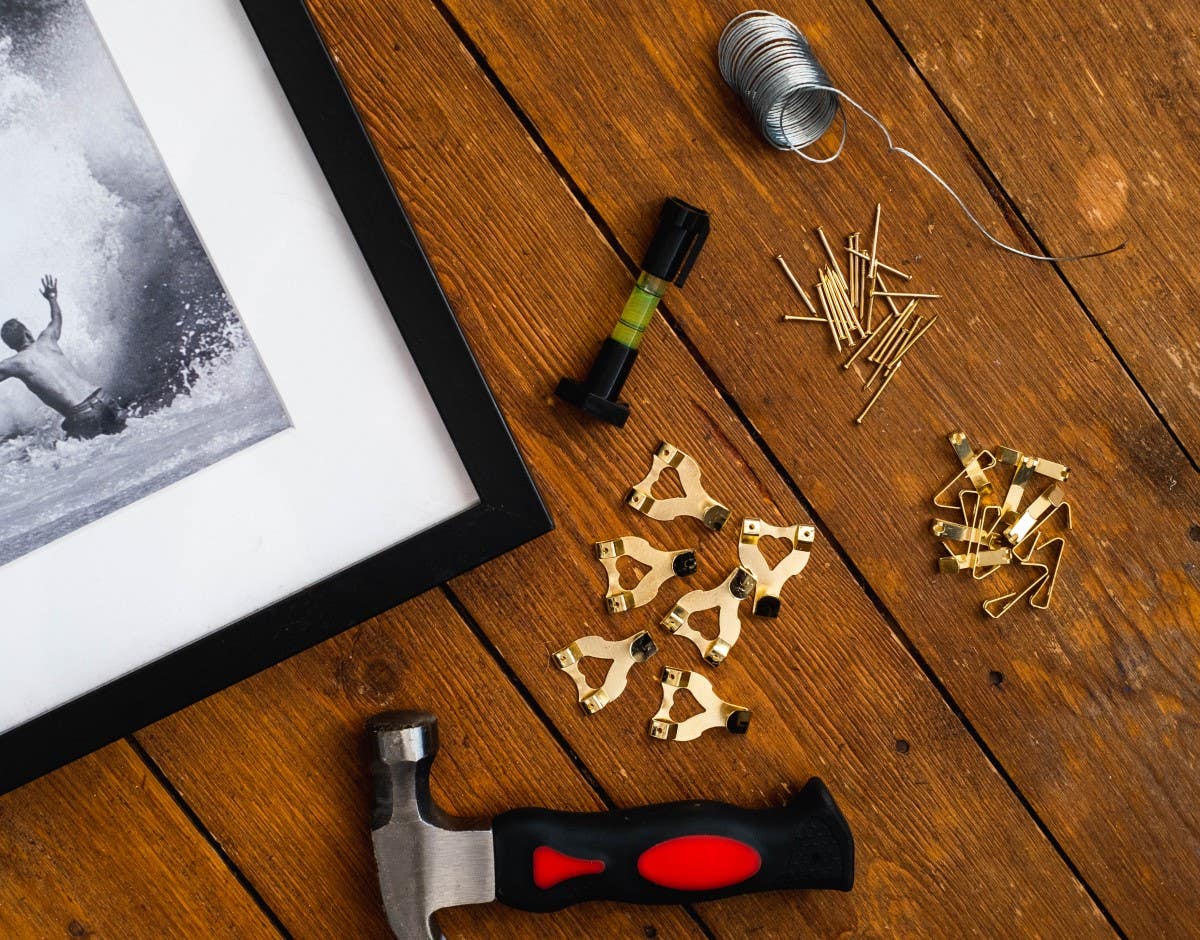How To Restore and Protect Wooden Garden Furniture
Article Topics:
-
How Outdoor Wooden Furniture Ages
-
Like-New Vs. Elegantly Aged Wooden Garden Furniture
-
Cleaning Wooden Garden Furniture
-
Preparing the Wood's Surfaces
-
Using a Wood Stain
-
Making Wood Weather Resistant
-
Protecting Wooden Outdoor Furniture Off Season
Introduction
Hard wood garden furniture, although resilient, faces inevitable wear and tear caused by prolonged exposure to the elements and regular use. Left unchecked, this wood degradation will over time make your garden furniture look shabby and uninviting.
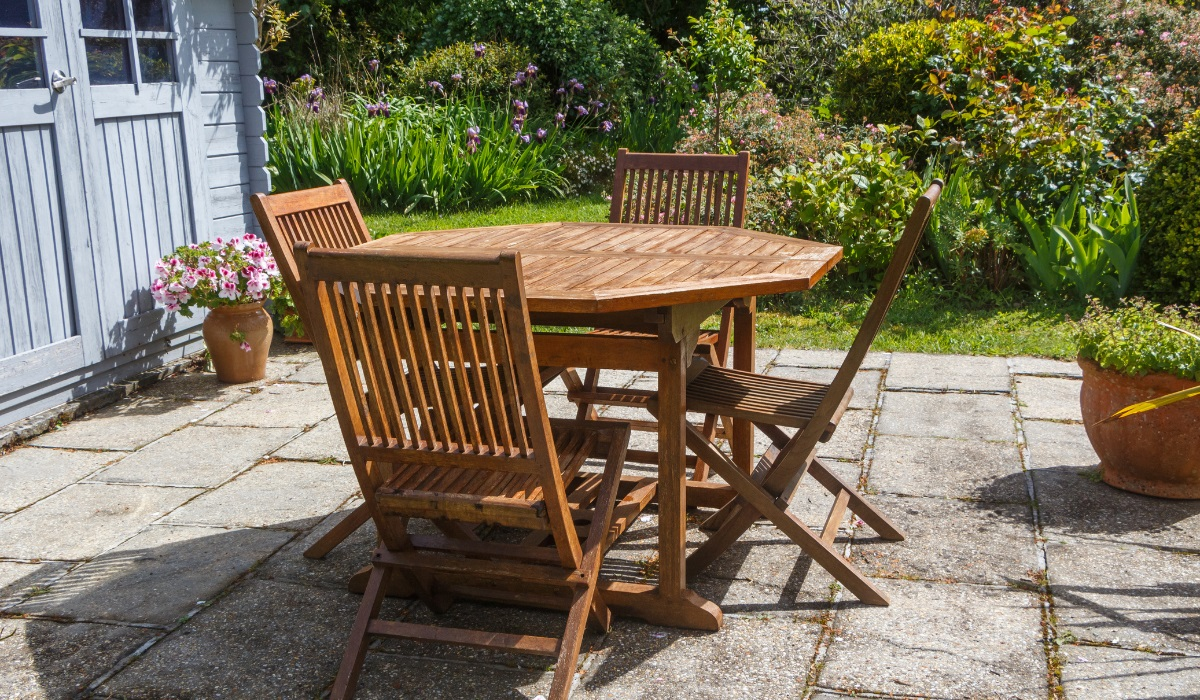
The way to avoid this is to regularly restore your wooden garden furniture, and to take action to protect it from the ravages of hot sunshine, rain and moisture, regular use in the warmer months and low winter temperatures.
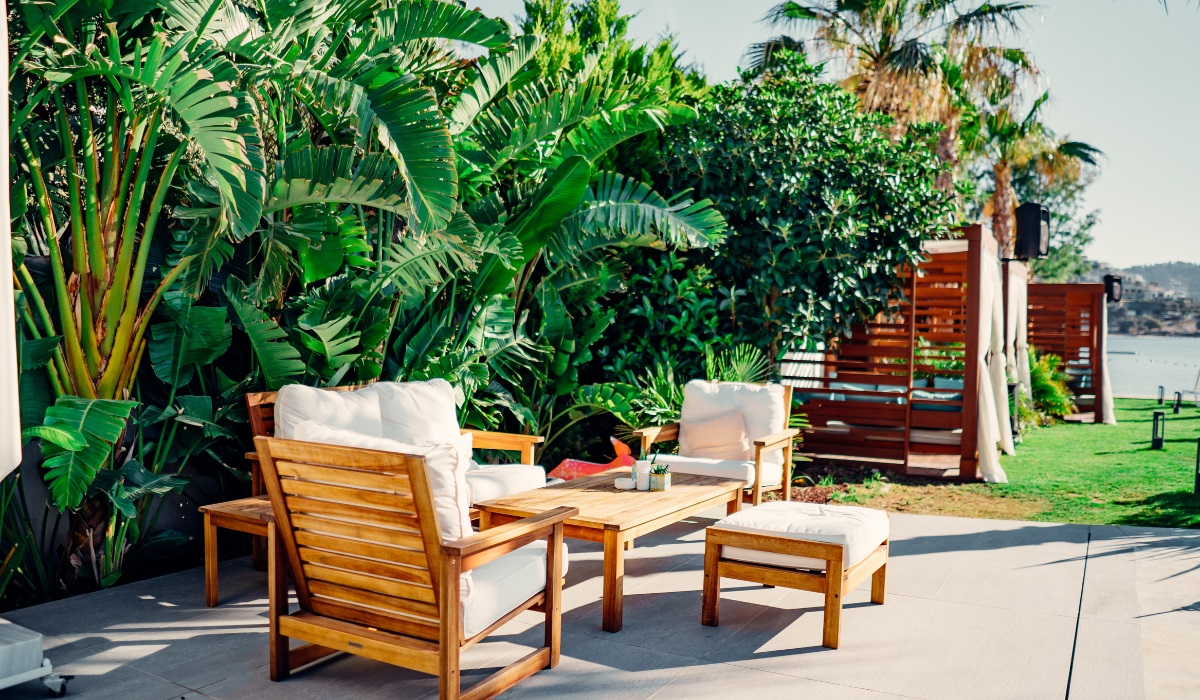
In this article we’ll explore how to care for and protect your wooden outdoor furniture. We'll take a closer look at what causes wood to age, how the aging process manifests, how to treat and restore wooden garden furniture for a new lease of life, and how best to protect it for the future.
Let's begin by taking a look at what happens when outdoor wooden furniture ages.
How Outdoor Wooden Furniture Ages
How your wooden garden table and chairs age depends on how exposed they are to the elements. For example, if they’re outdoors during the spring and summer months only, they will age less than if you leave them outside all year round.
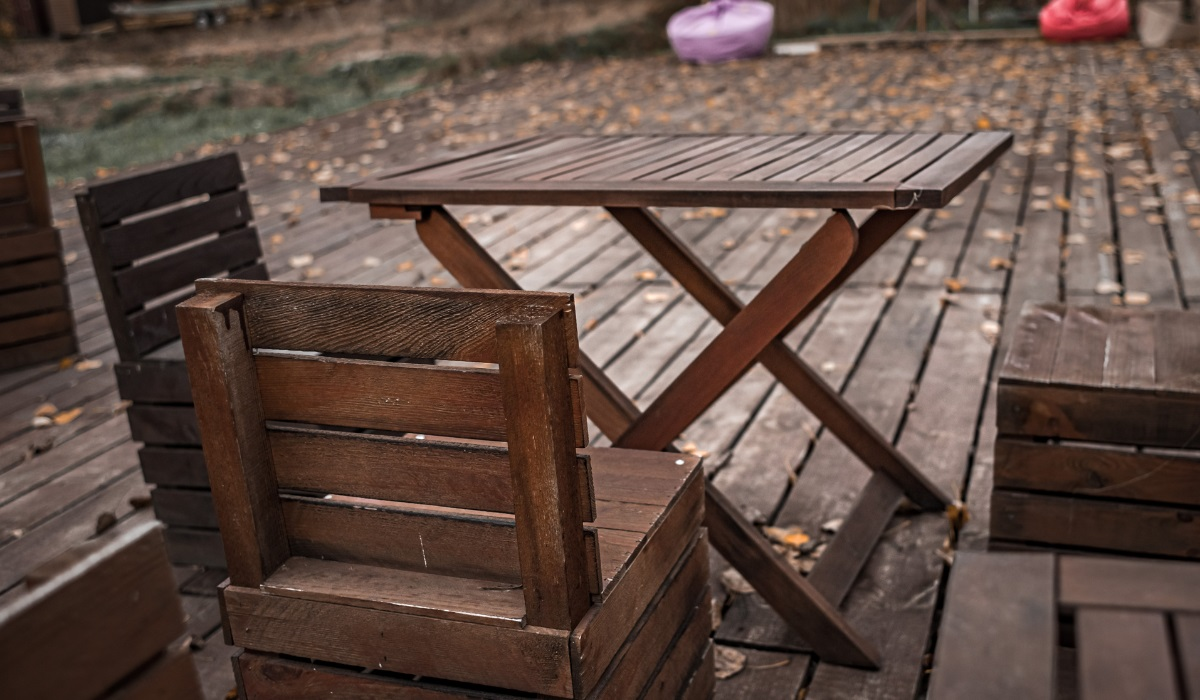
Another factor in the wood aging process is how well (or not) your outdoor furniture is treated, with varnish or other wood preserver. More on that later.
Ultimately, you want to make sure that your table and garden chairs keep their natural colour and appeal, using lighter or heavier staining or oils, and that the wood itself remains in tip top condition.
Faded Colour
Sunlight triggers a chemical reaction in the wood's pigments, causing them to fade. Exposure to direct sunlight (UV rays) plays a significant role in this process, leading to the gradual lightening of the wood's colour.
The intensity of colour fading may vary with seasons, with more exposure occurring during prolonged hot, sunny periods.
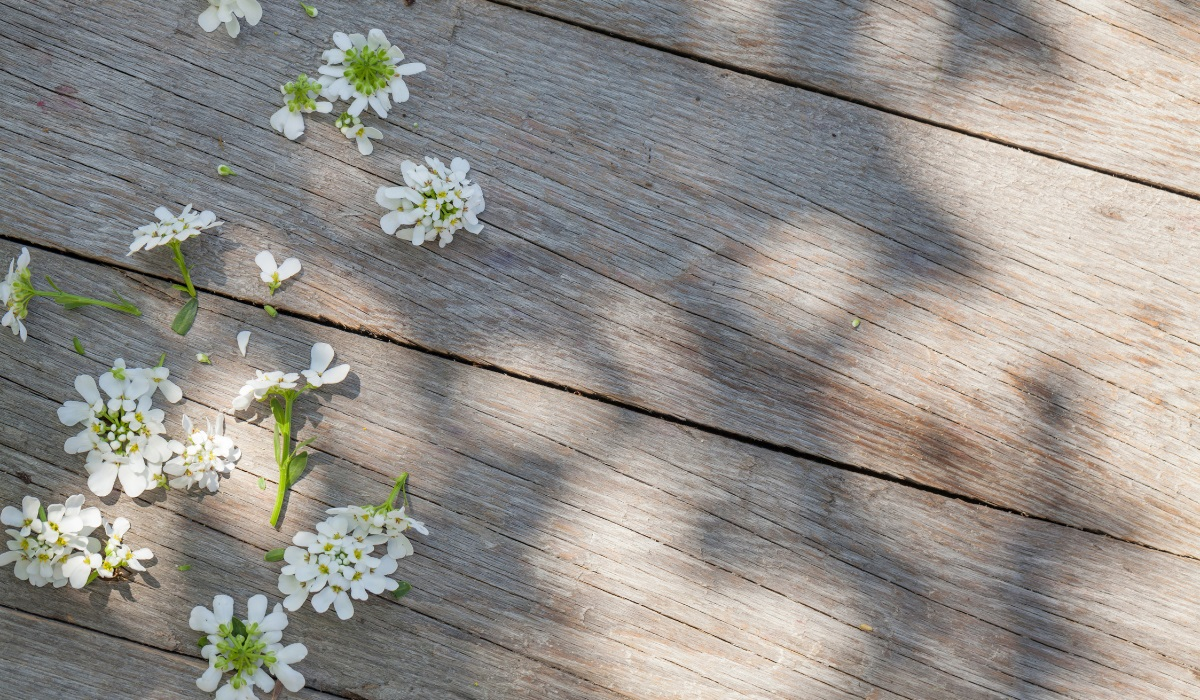
Cracking and Warping
Wood that’s not properly treated absorbs and releases moisture, depending on environmental conditions. This, along with frequent changes in temperature, can cause wood to expand and contract, leading to hairline cracks and even slight warping.
Each wood species reacts differently to these environmental factors, affecting the severity of any cracking and warping.
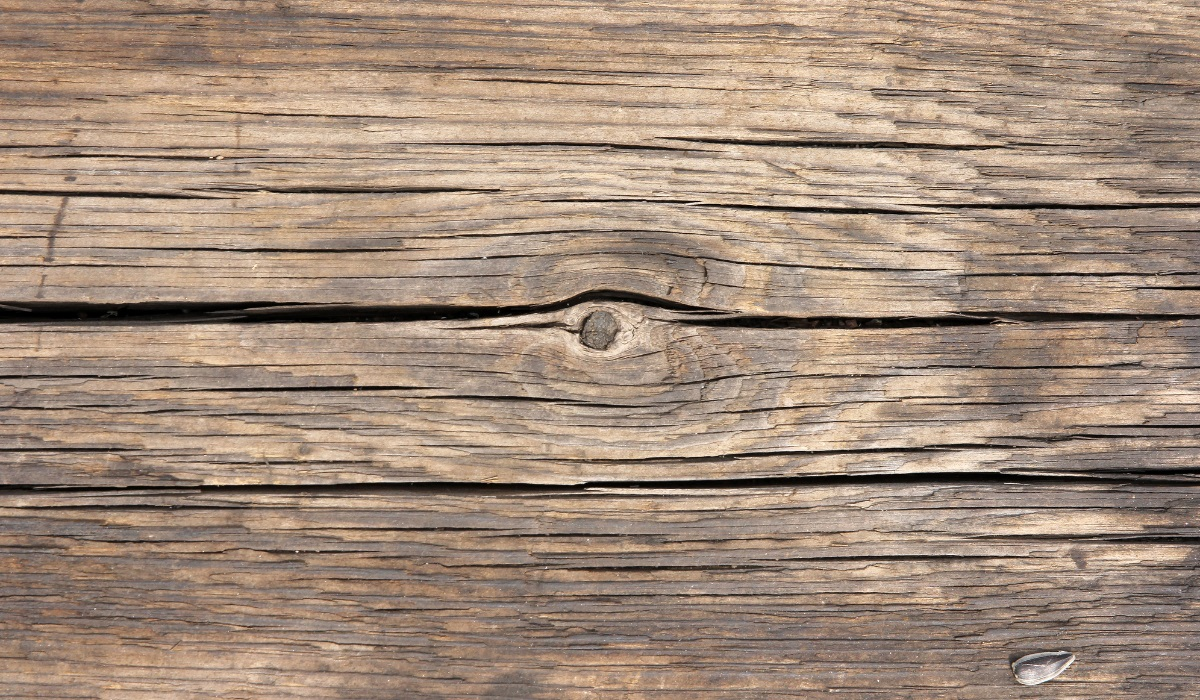
Moss, Mildew and Mould
As already mentioned, the porous nature of wood makes it susceptible to moisture retention, especially in damp conditions.
Moss, mildew and mould spores, present in the air, find a hospitable environment on the moist surfaces of timber garden furniture. Left untreated it will grow and spoil the beauty of the wood colour and grain, even leading to rot.
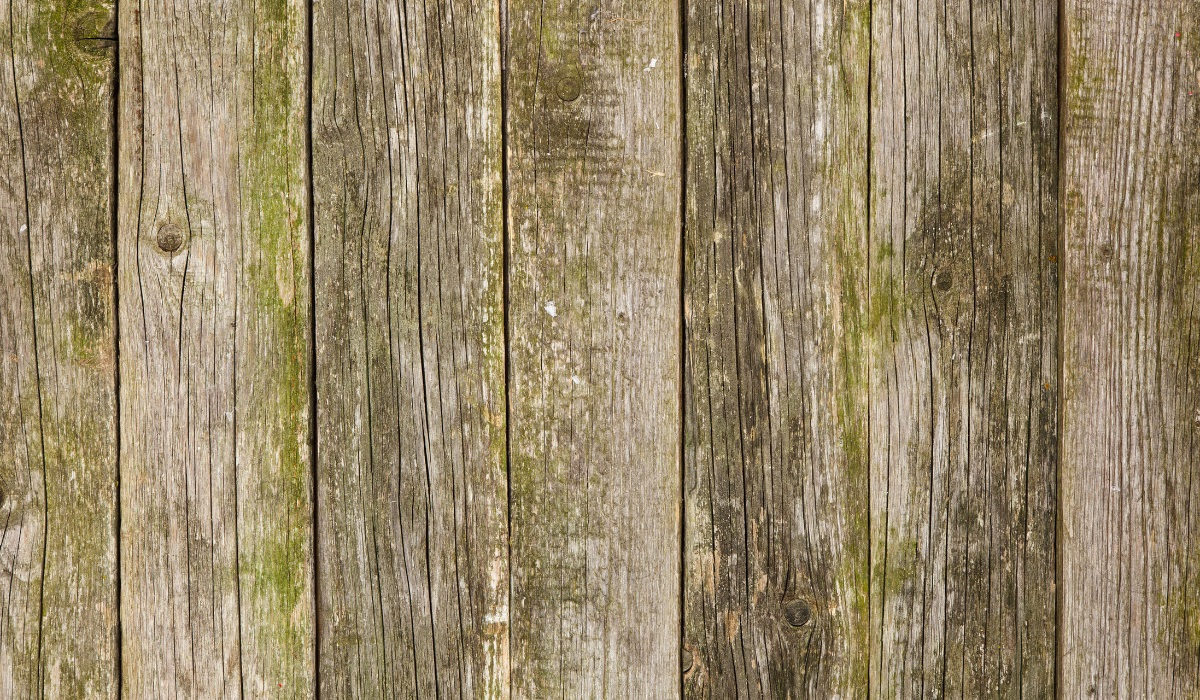
Erosion and Abrasion
Wind, rain, and other weather contribute to surface erosion and abrasion. This can result in roughness, altering the wood's tactile texture. These changes are often uneven as different areas of your furniture may be more exposed to the elements than others.
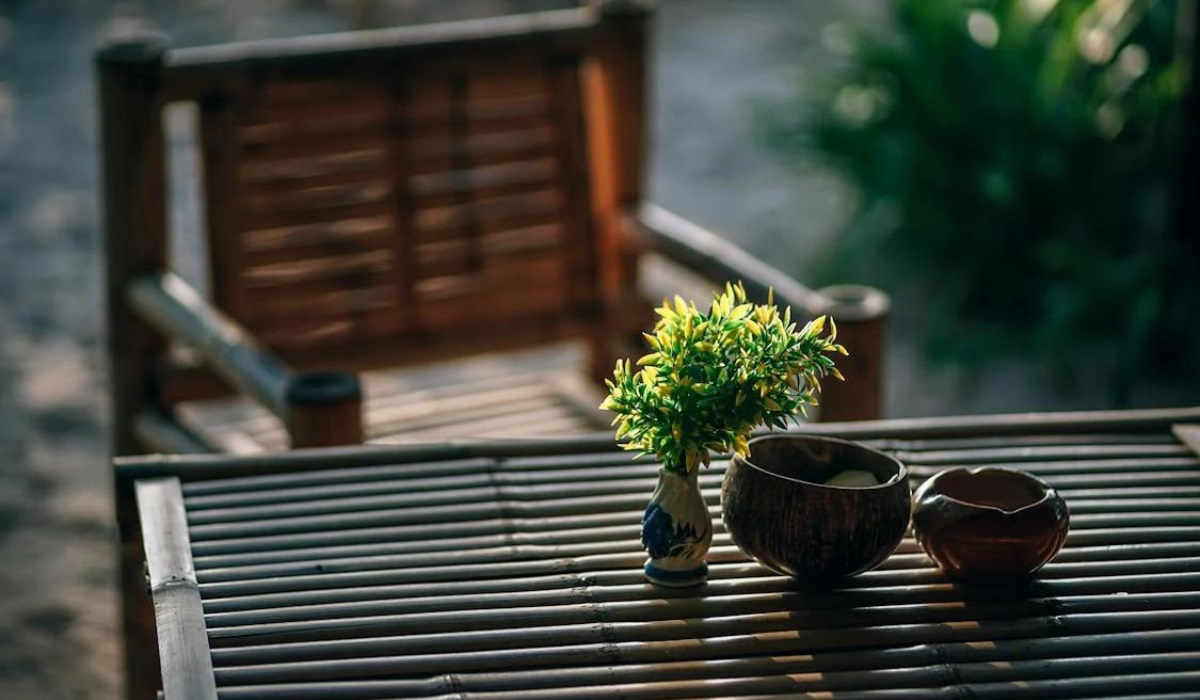
Like-New Vs. Elegantly Aged Wooden Garden furniture
It's worth noting that while this kind of erosion and abrasion patinaed weathering is often seen as a bad thing, some people enjoy a more naturally weathered look. Such imperfections in the wood and wood grain offer a particular type of rustic or more 'natural' visual appeal.
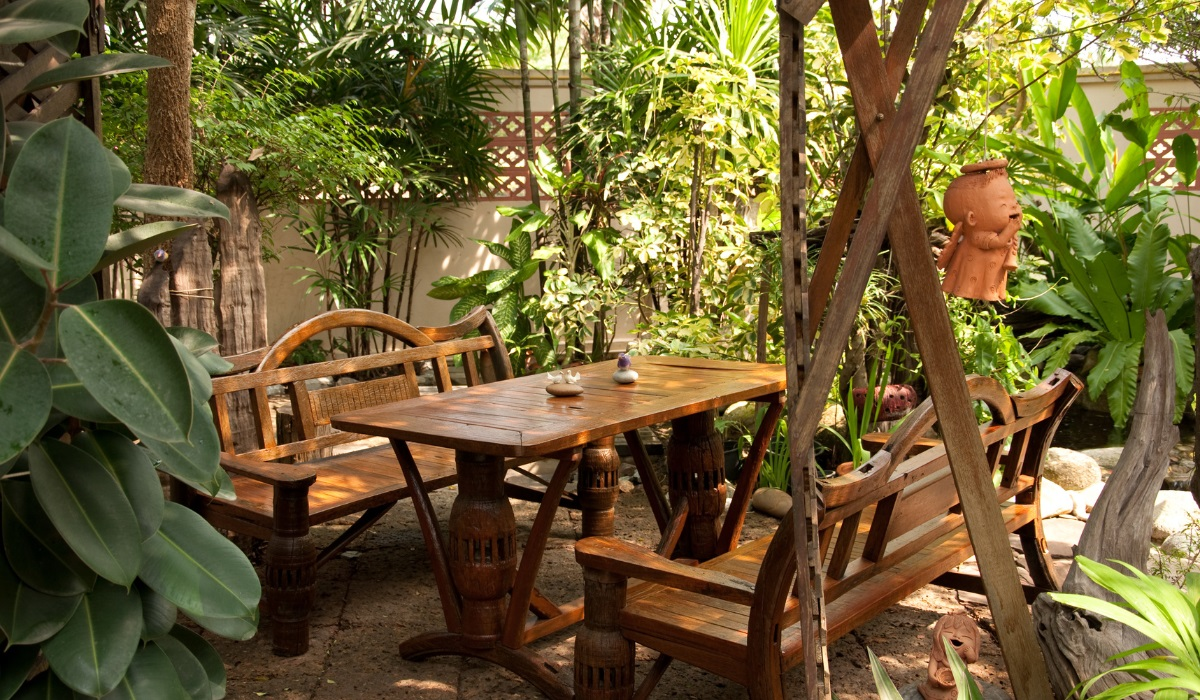
Using different processes and products you can choose to restore your wooden garden furniture back to a like-new look, or keep some of its aged elements as aesthetically pleasing imperfections.
Either way, it's really important to make sure wood surfaces are always clean and free of bio growth. Before you can begin to restore your wooden outdoor furniture you will need to prepare the wood surfaces by cleaning, if necessary filling, and finishing to your desired level.
Let's get into how to restore and protect your outdoor furniture, beginning with cleaning the wood surfaces, including tabletops, seats and seat backs, table and chair legs, edges and undersides.
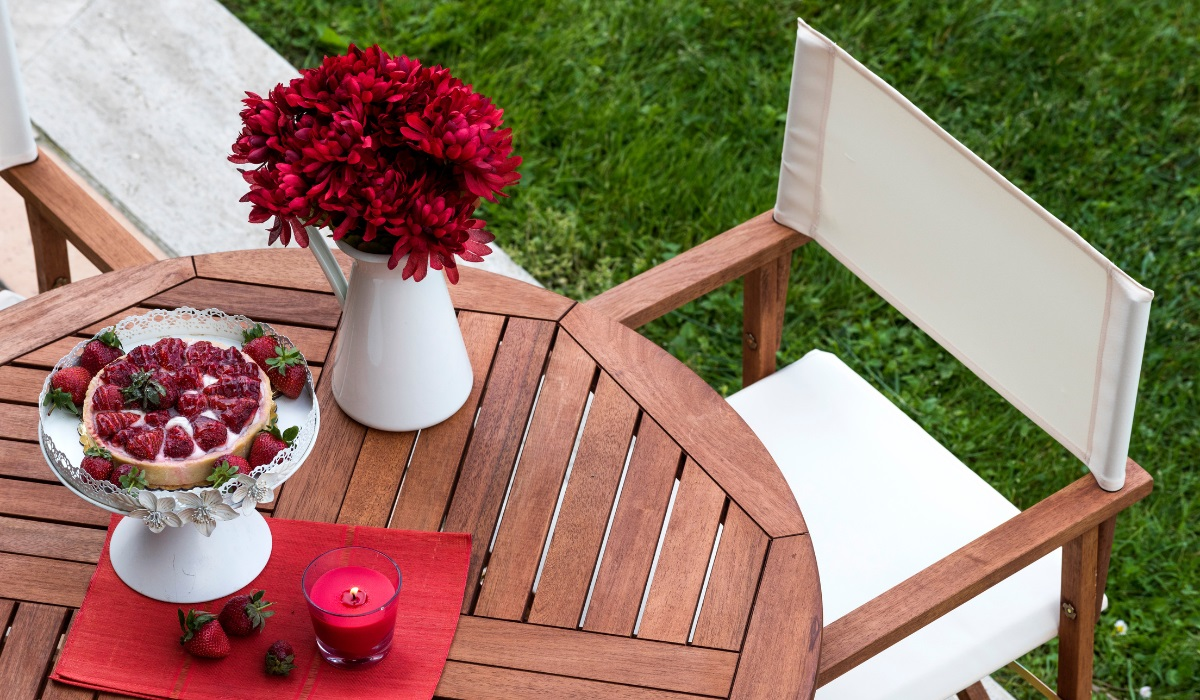
Cleaning Wooden Garden Furniture
The following simple steps will ensure that your wooden tables and chairs are clean and well prepared for treating.
Before diving into cleaning, it's important to assess your furniture's condition, and remove cushions and any accessories that may obstruct the cleaning process.
-
Begin by thoroughly brushing your wooden furniture pieces down with a stiff bristle brush. This will remove any loose dirt, debris and dust. For really stubborn stains try using steel wool.
-
Next the wood should be cleaned using a mild detergent in warm water, or a dedicated wood cleaner. Wood cleaners contain active ingredients that will not only breakdown dirt, but will also deal with bio growth such as moss, mildew and mould.
-
Scrub the wood surfaces with a soft brush. Ensure that you get into every nook and cranny, especially in the wood grain and around fixings so that the detergent or cleaner can do its work.
-
When you’ve finished cleaning, rinse your furniture using clean water to make sure all detergent or cleaner residue has gone. If you have one, use a pressure washer to rinse your furniture. Be sure to choose a lower setting with a fan water jet.
-
Wipe down with a clean cloth and let your garden furniture dry naturally. Make sure each furniture piece is completely dry before moving to the next stage.
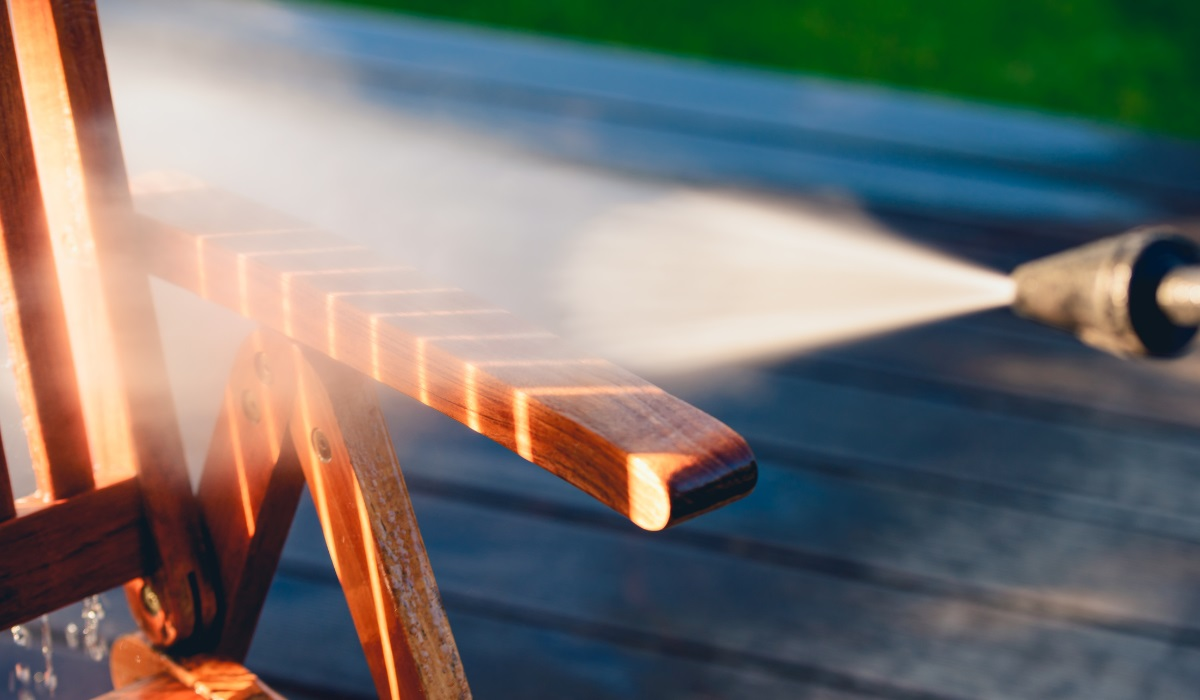
Preparing the Wood’s Surfaces
Now that your garden furniture is clean, it's time to move to the next stage — preparing the wood surface for treatment:
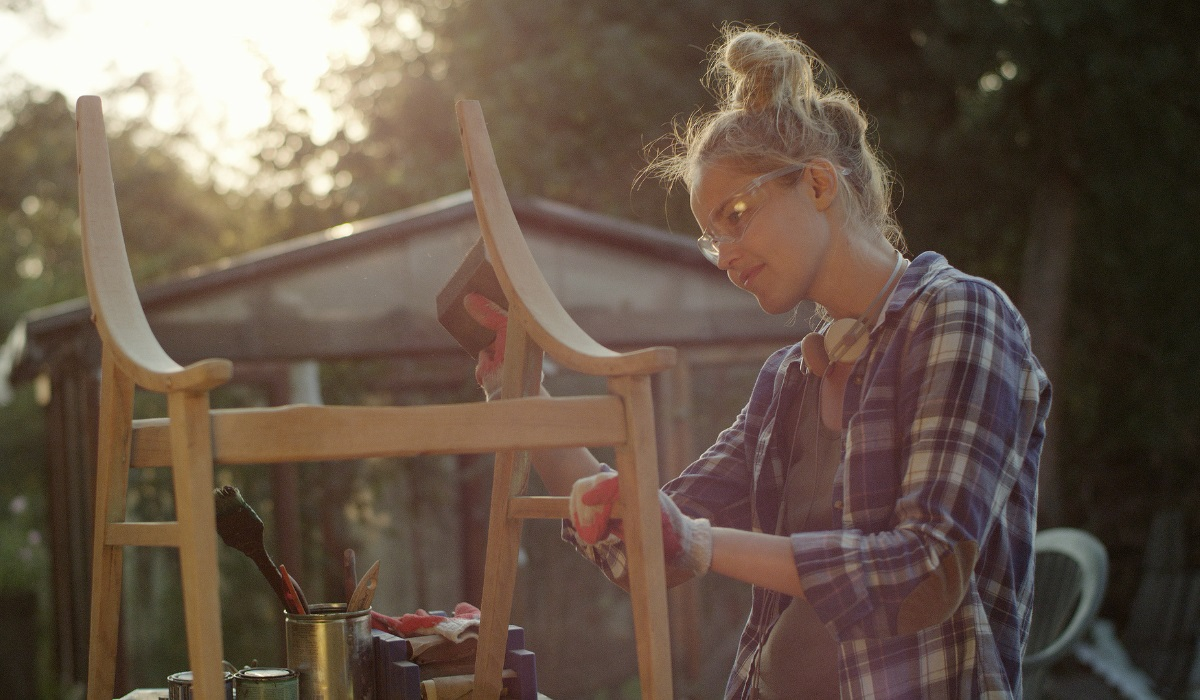
-
Firstly, if your furniture has any deeper cracks in the grain, or knot holes, you should consider using a wood filler, as holes and cracks will collect moisture, damaging the wood further. Choose a filler that best matches the colour of the furniture wood.
-
Fill any holes or deeper cracks and let the filler dry completely. Always follow product use instructions.
-
You should then lightly sand your wooden furniture surfaces, removing any old varnish or protective coating to reveal the natural wood colour, and to smooth down any dried filler.
-
Typically start sanding with a coarser grit sand paper and end using a finer grit (medium to super fine). Sanding block packs can be useful for this. Or use an orbital sander if you have one, with sanding discs going from coarser to finer.
-
After sanding, including undersides, wipe your furniture down with a damp cloth to remove all remaining sanding dust.
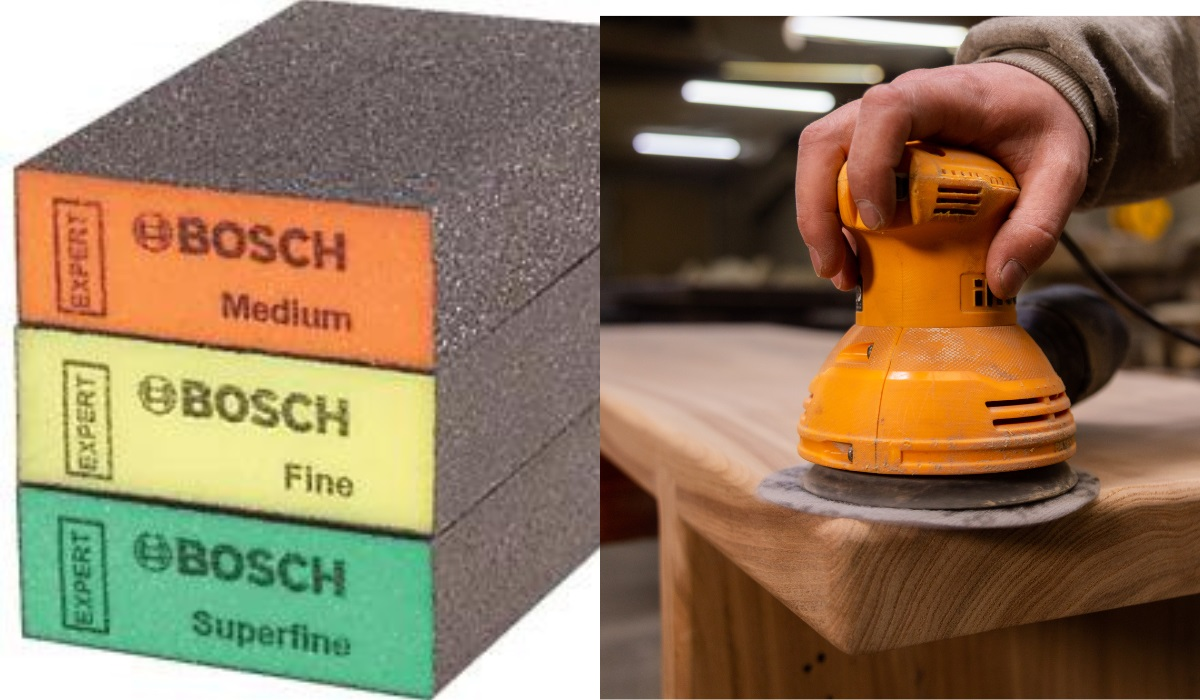
Using a Wood Stain
To colour your wooden furniture's surfaces and bring out the wood’s natural beauty, use a good quality stain. There are many products available. Which one you will choose will depend on the colour of your natural wood and how light or dark you want the finish to be.
Consider using a pre-stain product to help darker stains take to the wood more evenly.
Before you begin application, ensure that you’re working outdoors or in a well-ventilated space.
-
Begin by making sure that all surfaces are saw dust free.
-
Next, test your stain so you know how it will look before you begin. Apply a small amount to an underside surface to see how it turns out. For newer furniture you might only need a very light stain.
-
If you're happy with your stain colour, take a paint brush or foam brush and apply on all surfaces of your furniture evenly.
-
Be careful not to apply too much. You want just enough stain for coverage and to be absorbed by the wood.
-
When your furniture items are stained, leave them to dry, following the product use guidelines. You can apply a second coat if necessary, following the same steps as above.
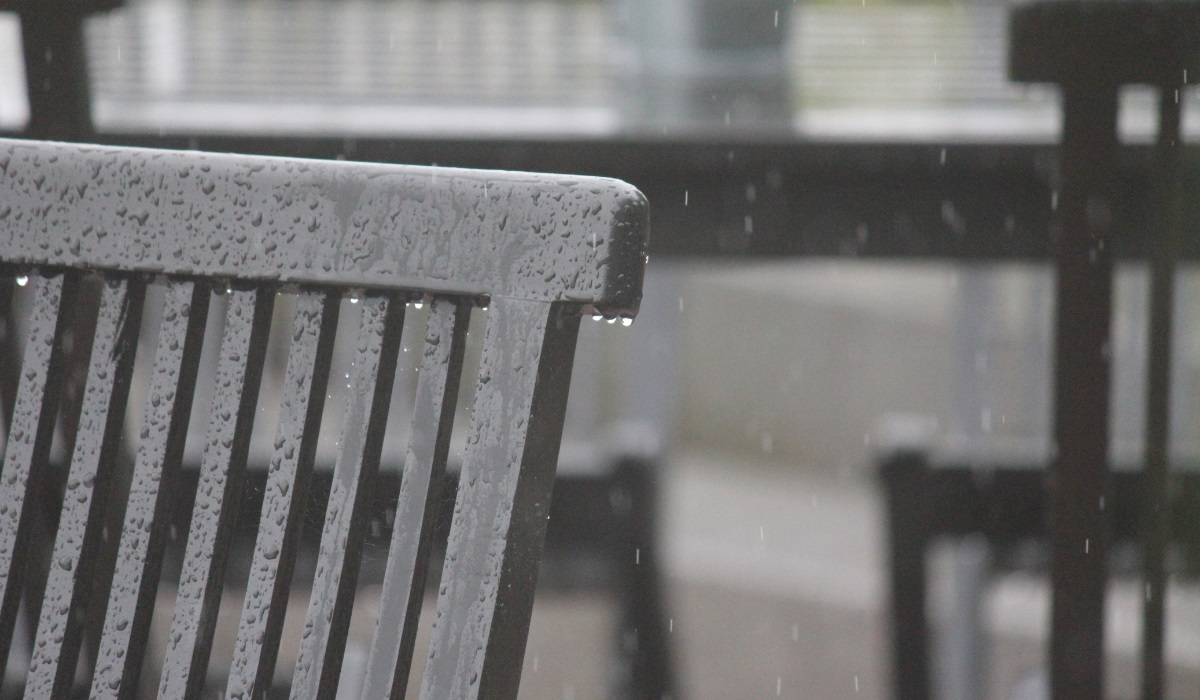
Making Wood Weather Resistant
Once you have your furniture looking revitalised with a new finish, you will need to add a final coat for weather protection.
You can use a wood varnish, which is fine if you want a like-new sheen. But for a more natural look, use teak oil.
Varnish will give greater weather protection, lasting two or three years before a re-coat is needed. Whereas teak oil will likely require annual application.
Applying varnish or teak oil is simple:
-
First, ensure you’re working outside or in a well-ventilated area and if varnishing that you’re wearing protective gloves.
-
If you have stained your furniture, make sure that it's properly dry before continuing.
-
Apply the teak oil or varnish evenly to your furniture surfaces using a paint brush or foam brush, ideally going with the grain.
-
Allow to dry as per the product instructions.
-
Apply a second coat if needed.
It's worth mentioning that there are wooden garden furniture restoration kits available that supply products together to complete the wood restoration processes we've talked about in this article.
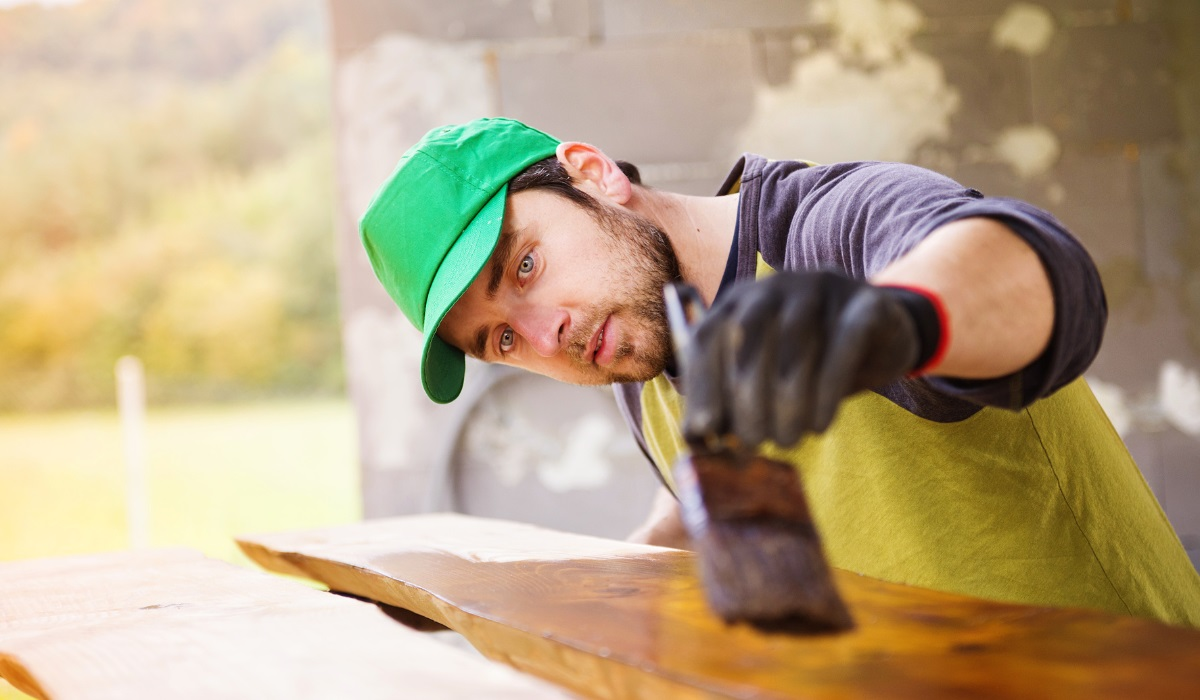
Protecting Garden Furniture Off Season
It's fair to say that garden furniture can never be protected against weather conditions permanently. The elements will ultimately win every time, especially if furniture items are left outside all year round.
But by taking a few straightforward steps you can make sure your wooden garden furniture is weather resistant to last up to two or three years between restorations.
As we’ve talked about in this guide, ensuring the wood is cleaned and treated will bring out its natural beauty, as well as protecting against UV rays, rain and wear and tear of use in the warmer months of the year.
But what about off season?
Covering your furniture during the winter with a waterproof tarp or sheeting will help protect against rain and wind. Cold however will be a problem, especially if you live where frosty winters are common.
Ideally, store your furniture off season in a shed or garage. This will better protect against moisture ingress and freezing temperatures that will damage your wooden garden furniture’s natural finish.
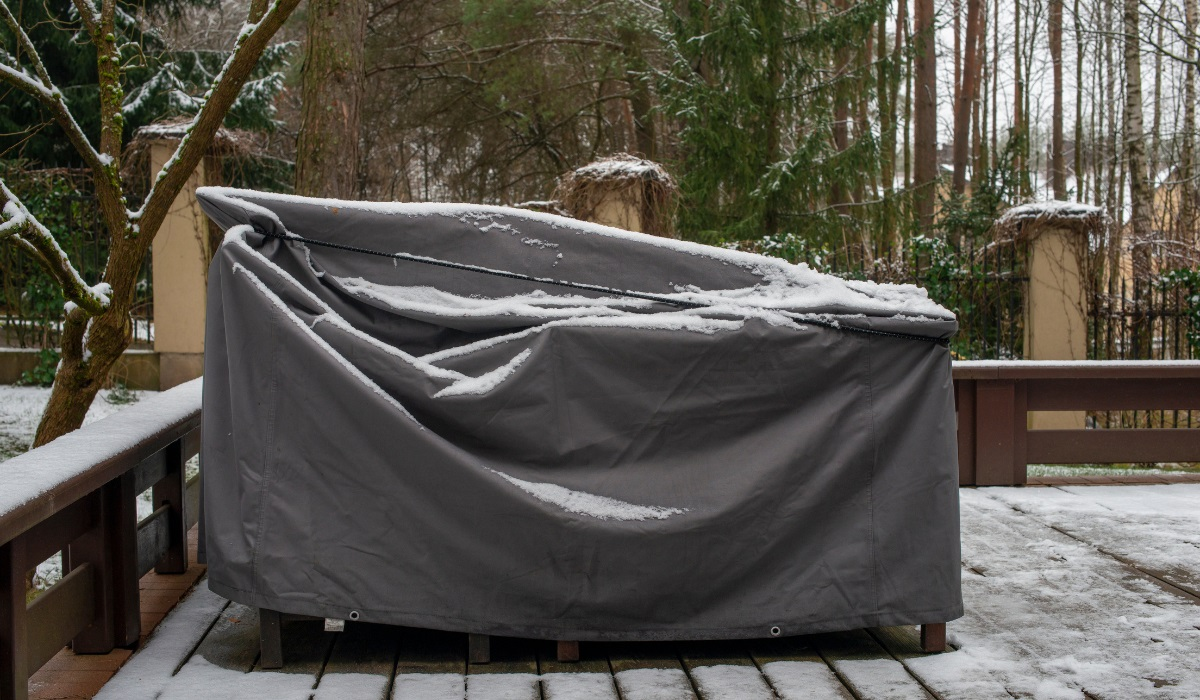
Final Thoughts
Garden furniture enables you to enjoy and get the most out of your outdoor spaces during the warmer months of the year, whether it's on the patio, decking, lawn or on a balcony or rooftop area.
Your furniture helps the outdoors to become an extension of your home living space, whether wooden furniture, iron furniture or rattan furniture. So keeping your outside chairs and tables in great condition will not only give it a longer life, but will also make it more appealing for family, friends and guests at barbeques, get togethers, parties, or when you’re just relaxing and enjoying the good weather.
For DIY inspiration the home and garden, go to the Hiatt Hardware Blog where you'll find articles and guides on a variety of interesting topics.
Discover a range of garden ironmongery: gate or shed hardware, locks, latches and more, visit Hiatt Hardware.

